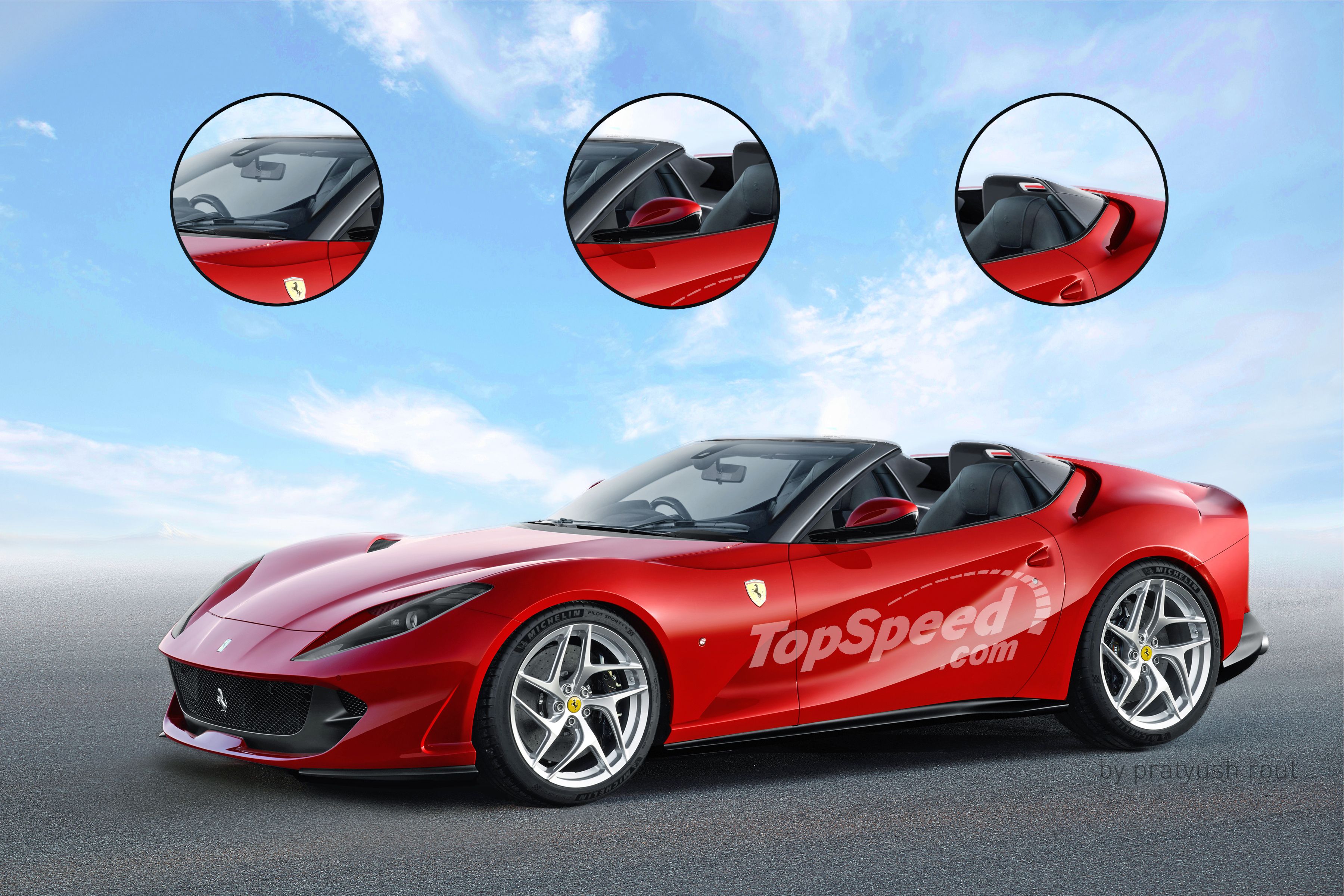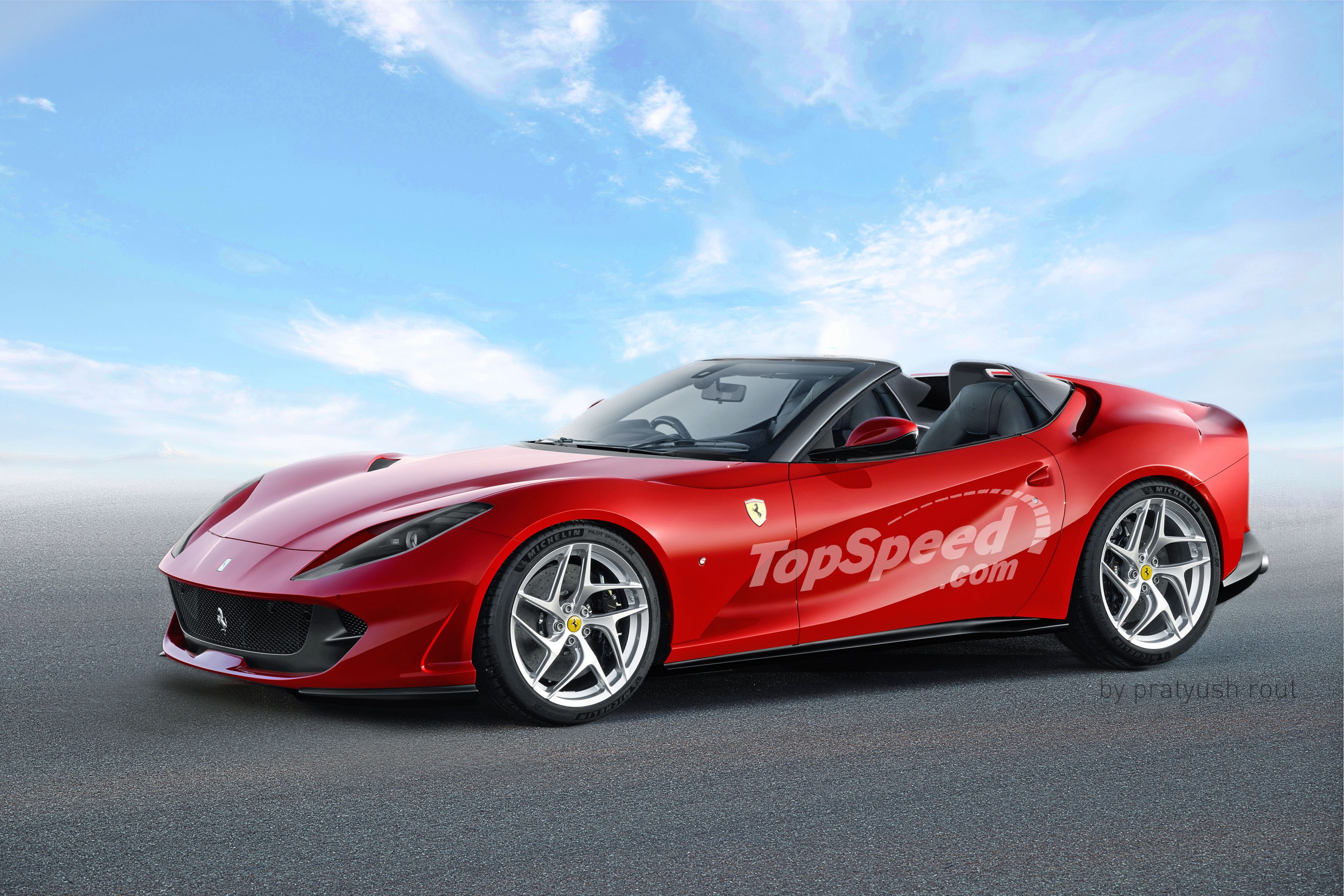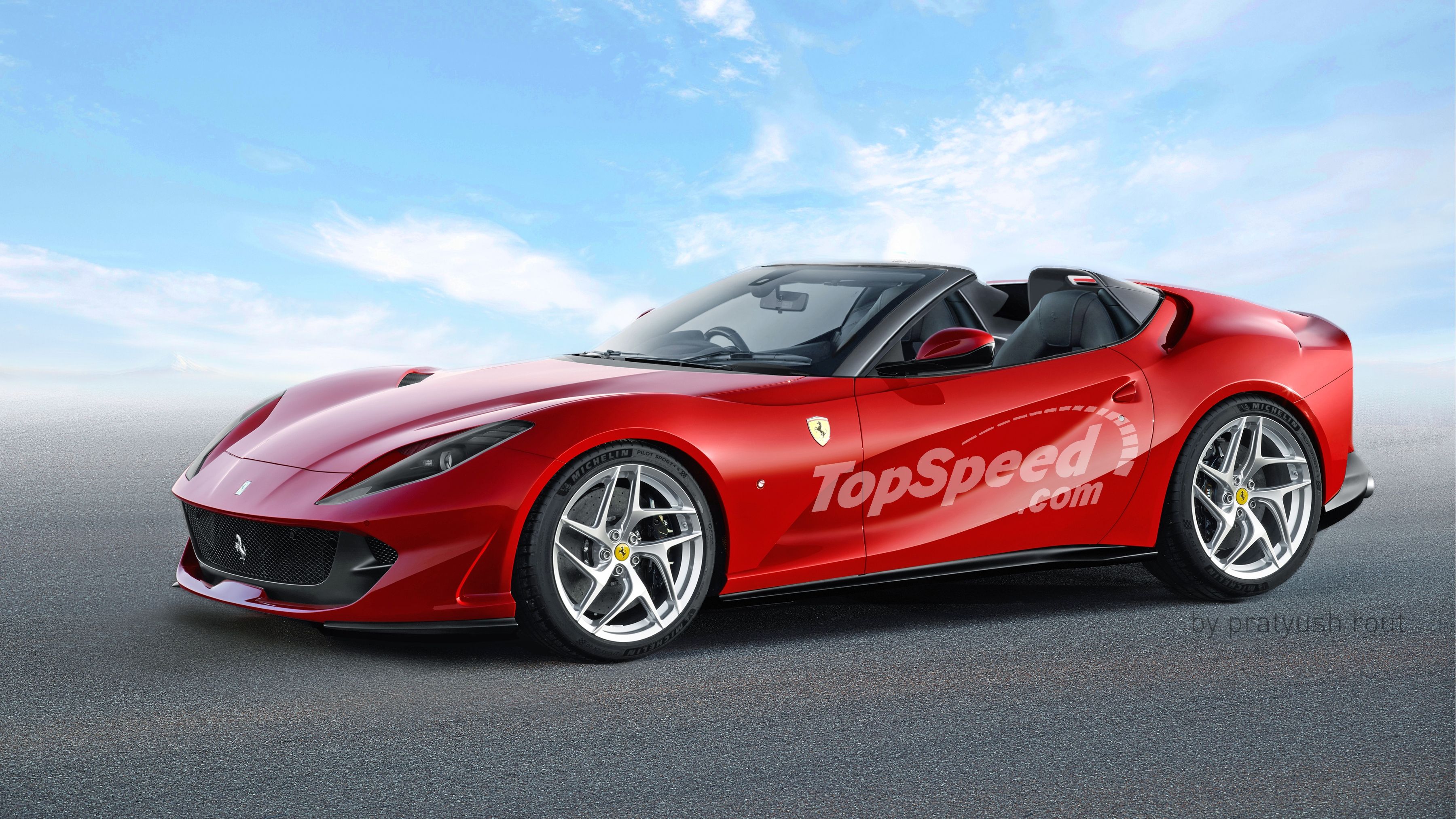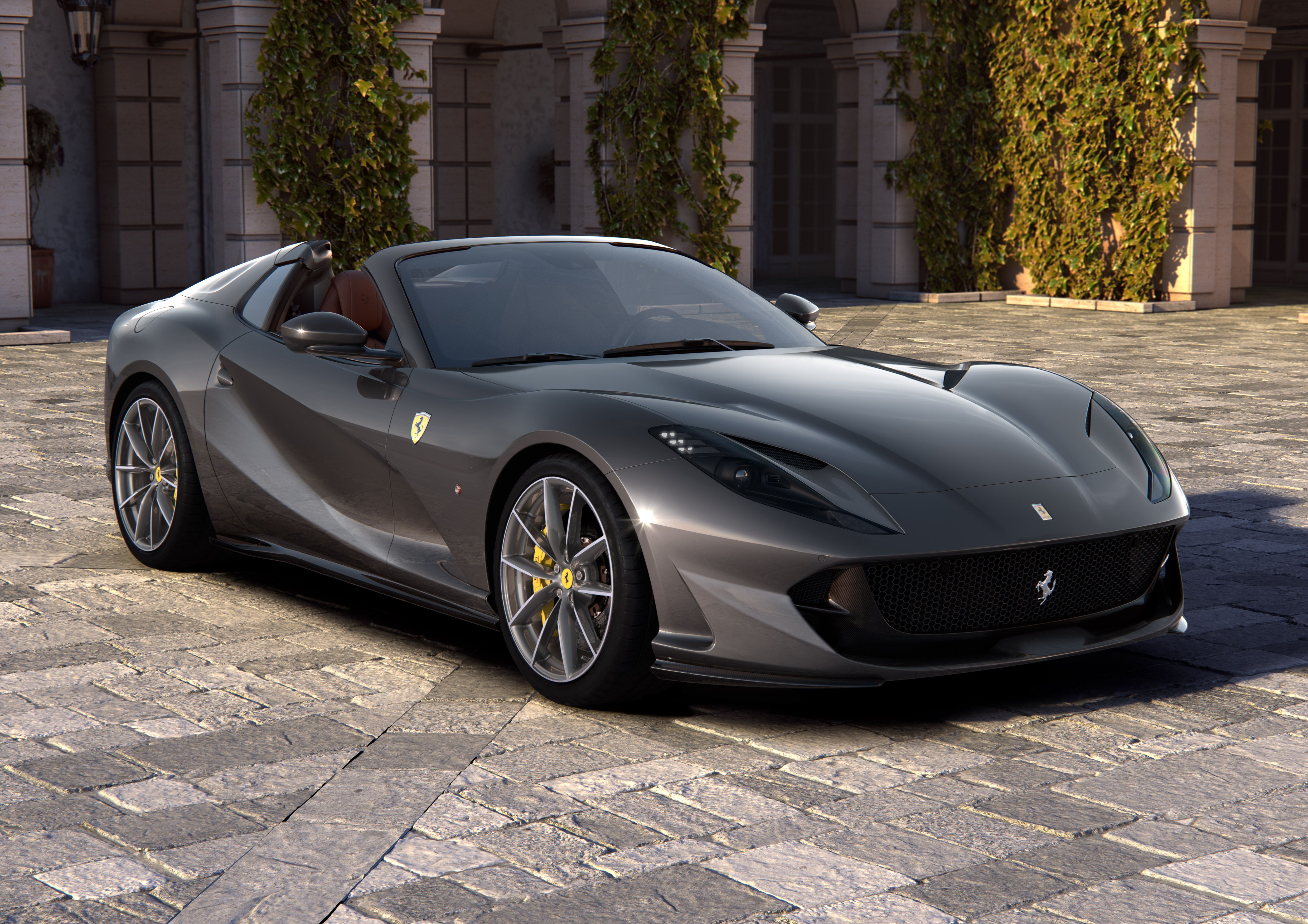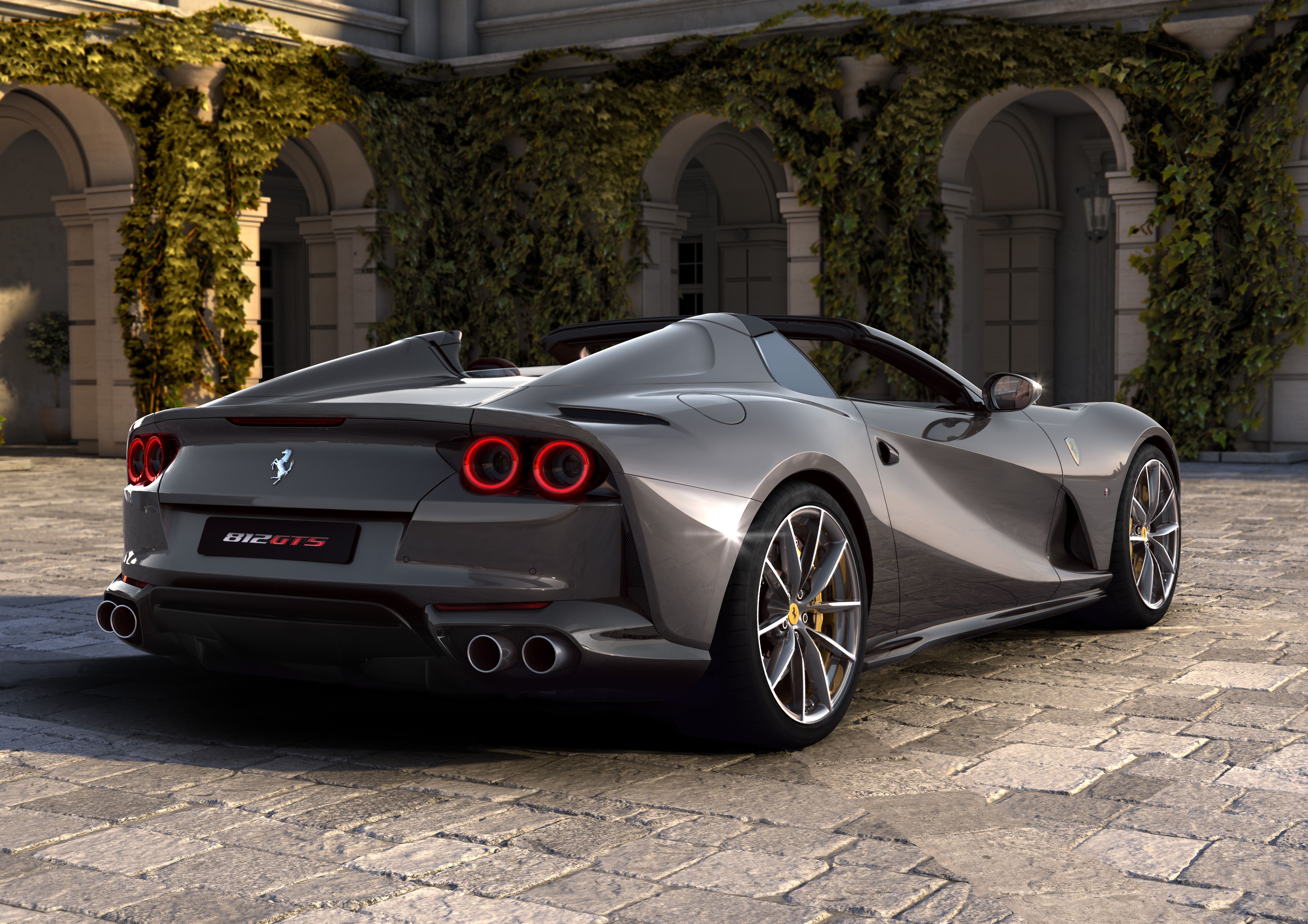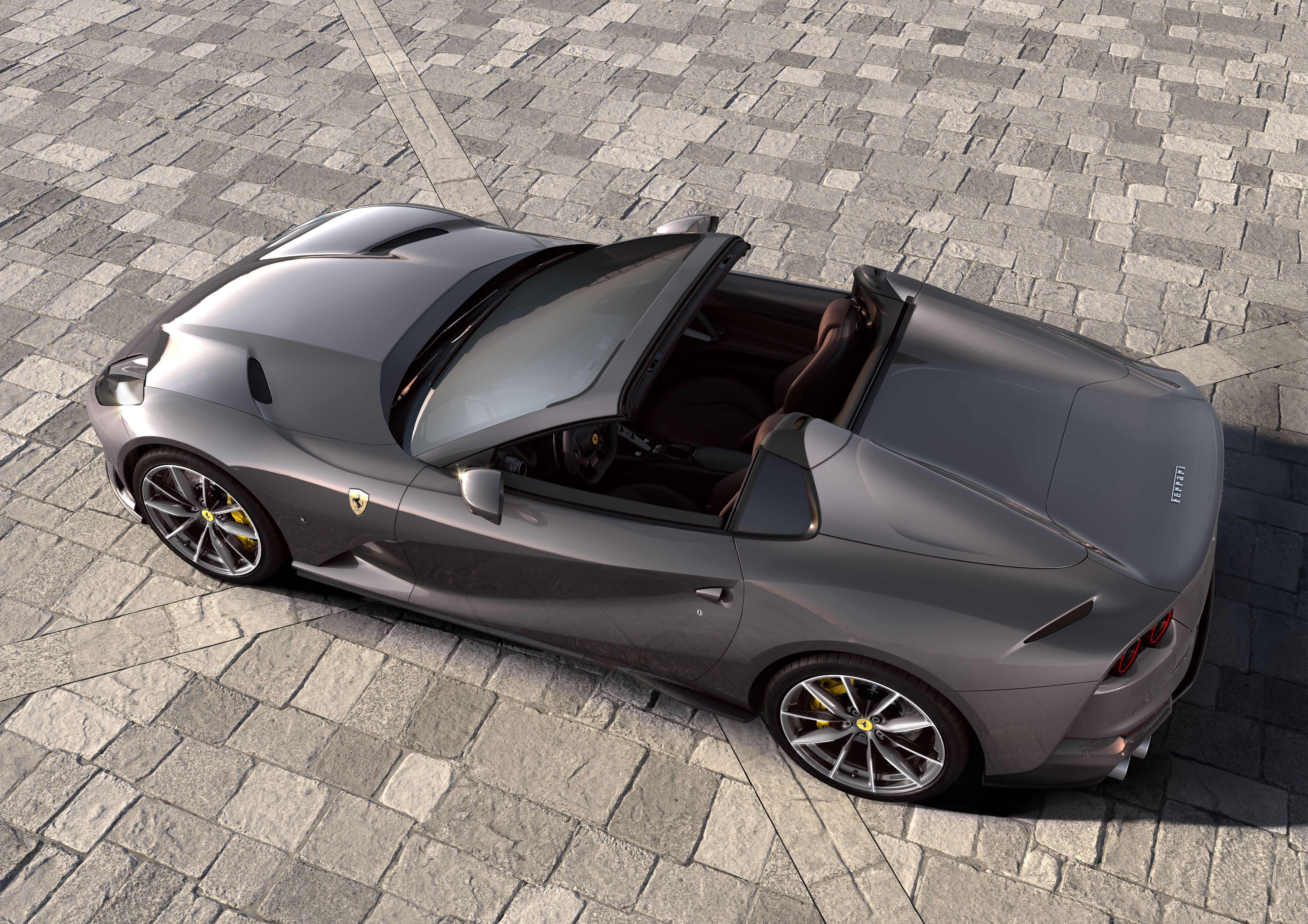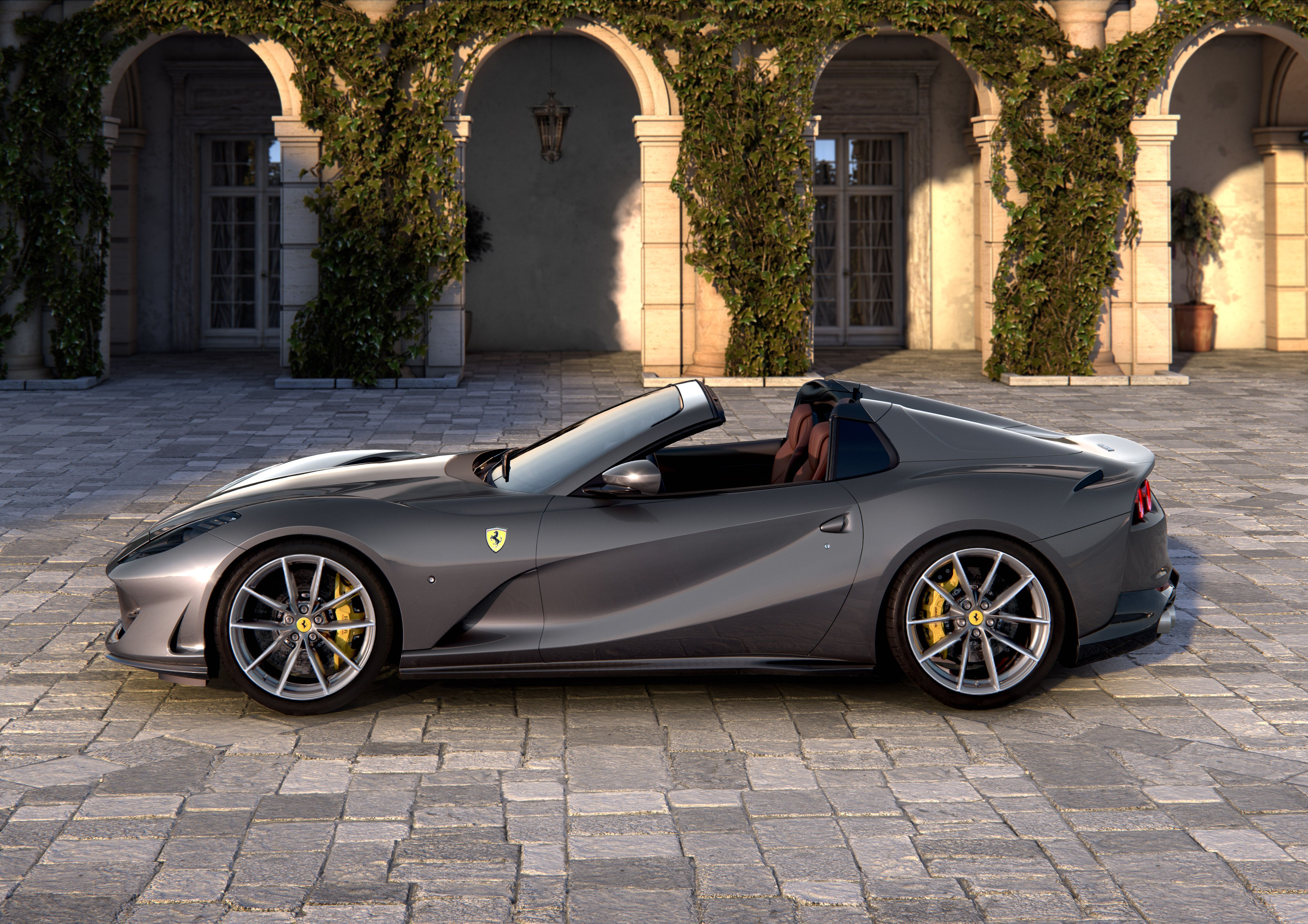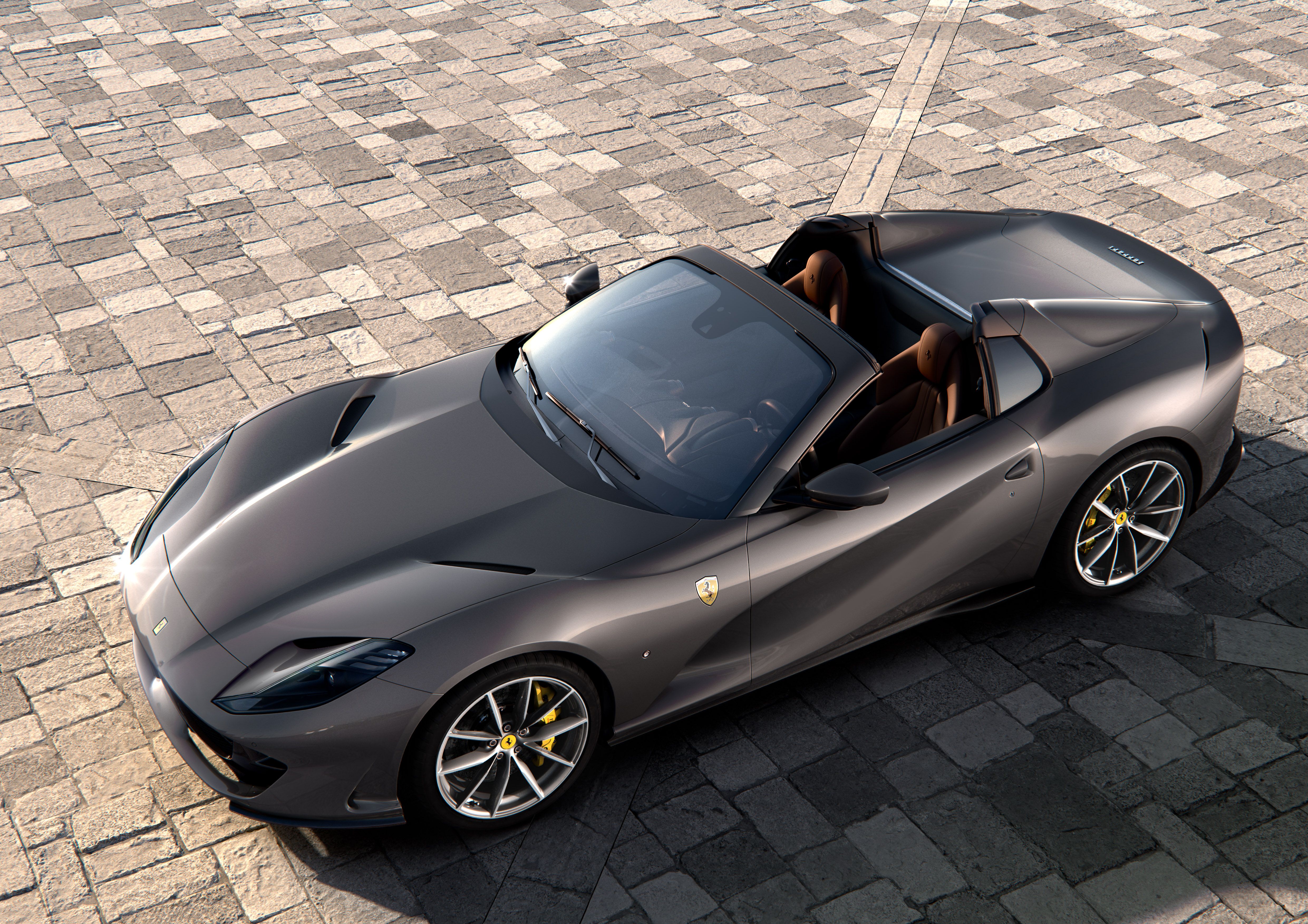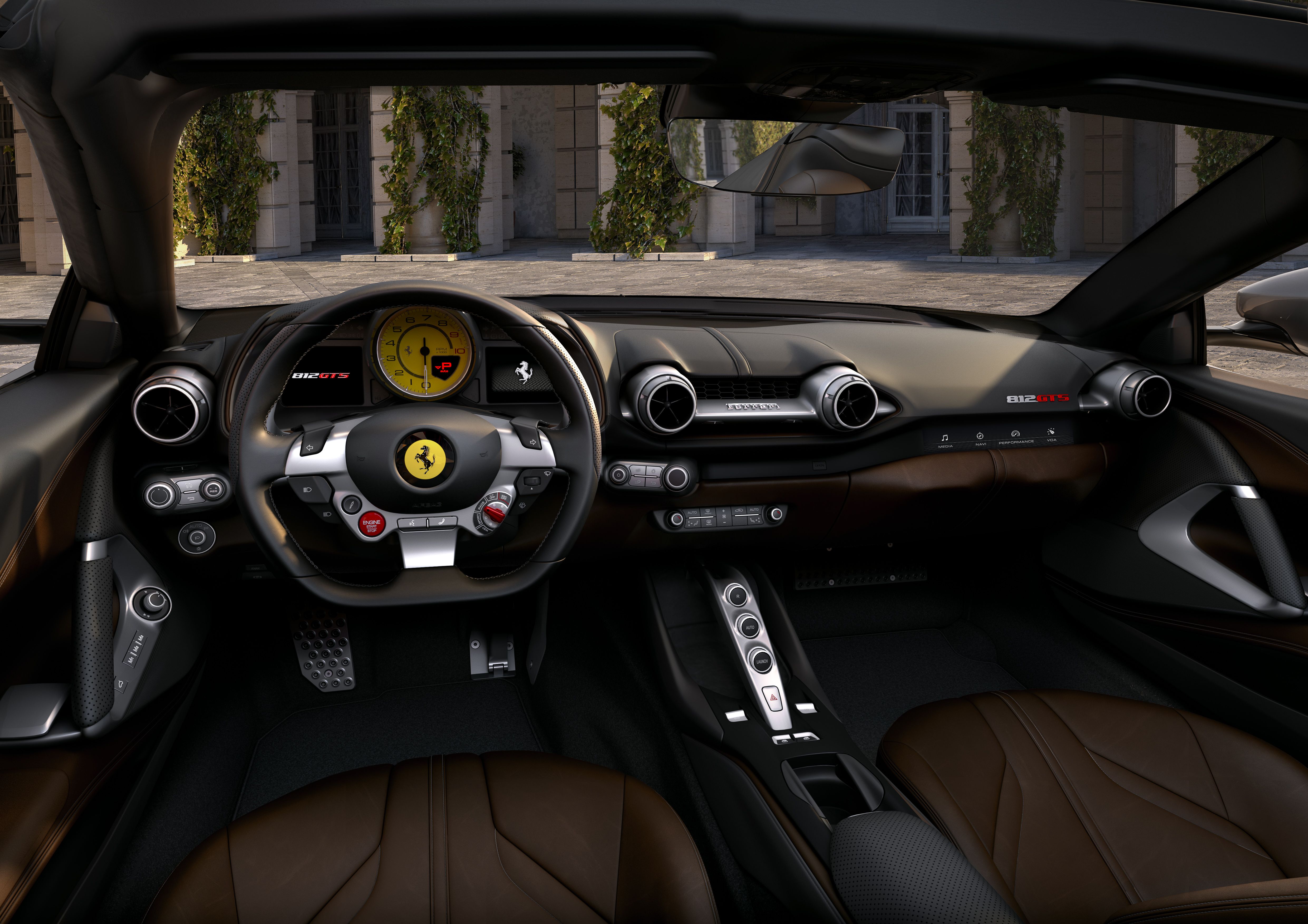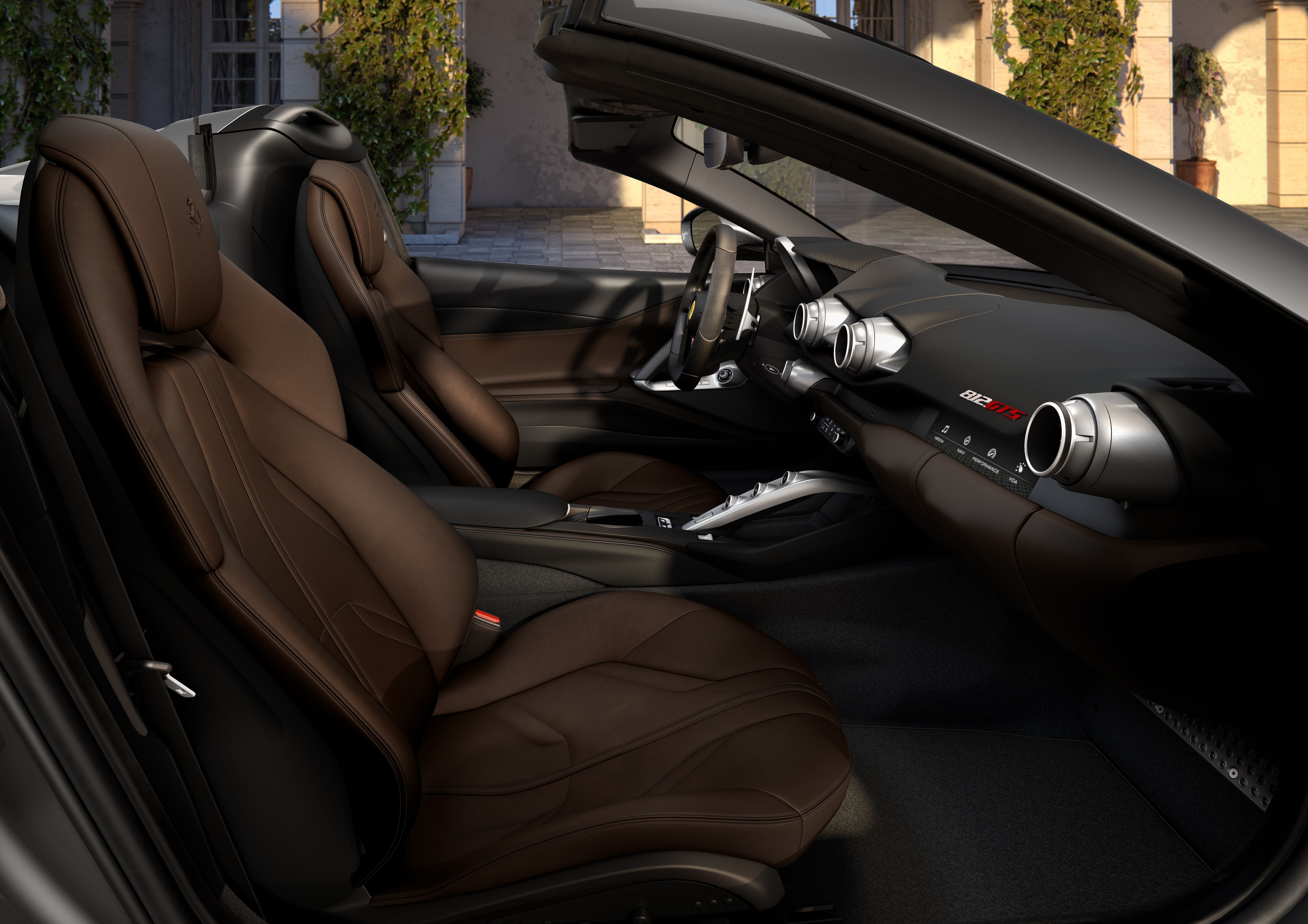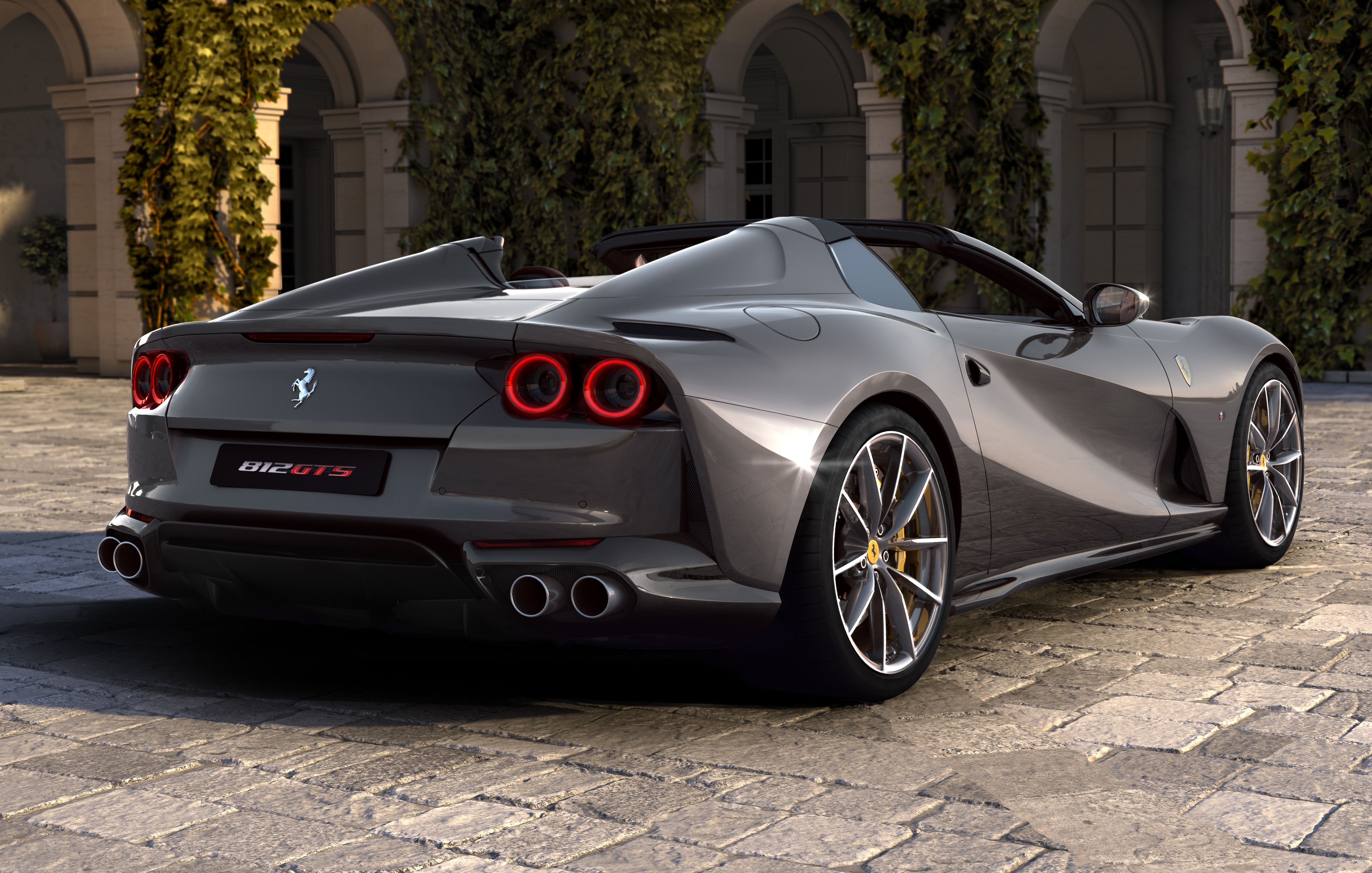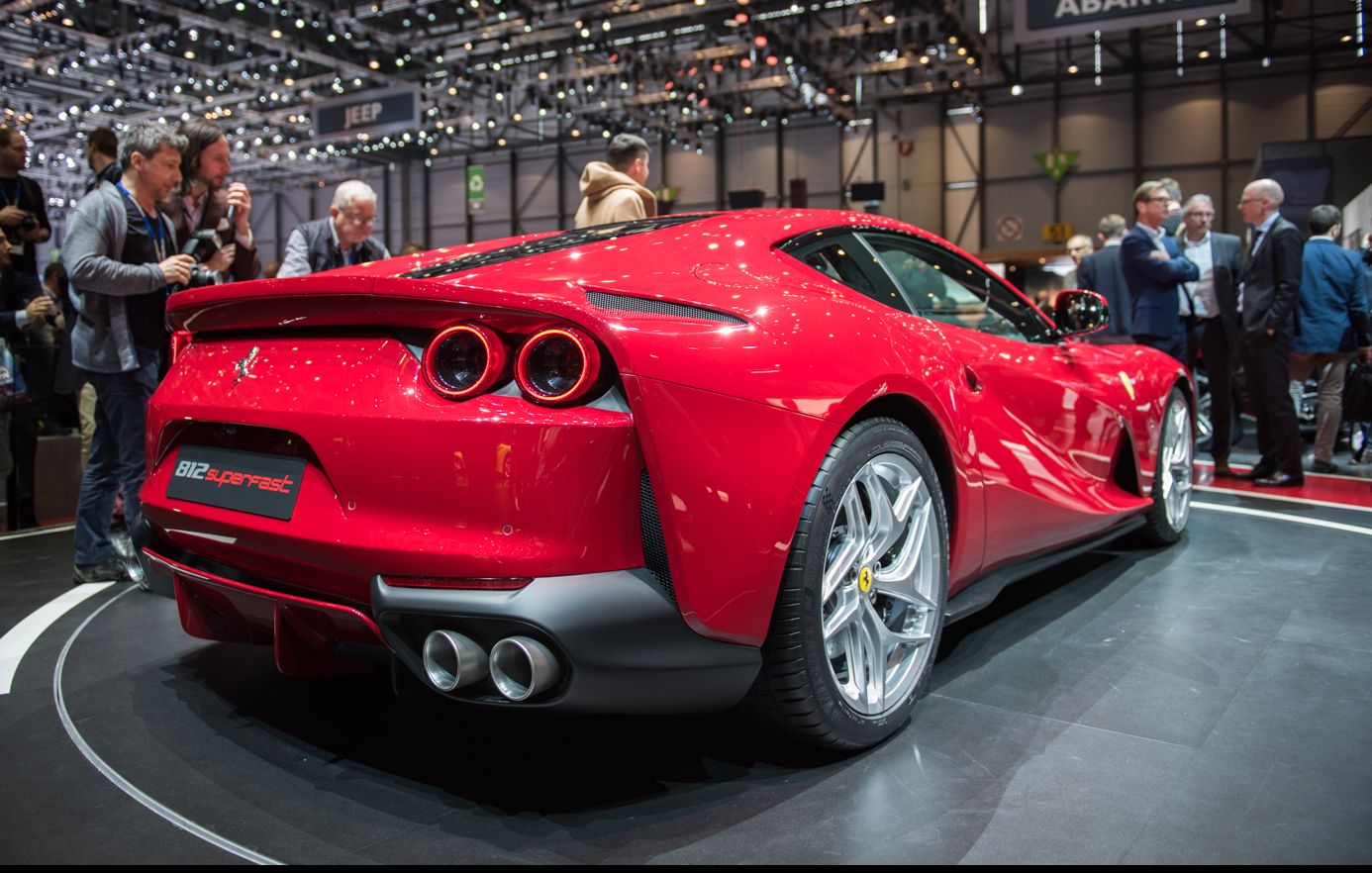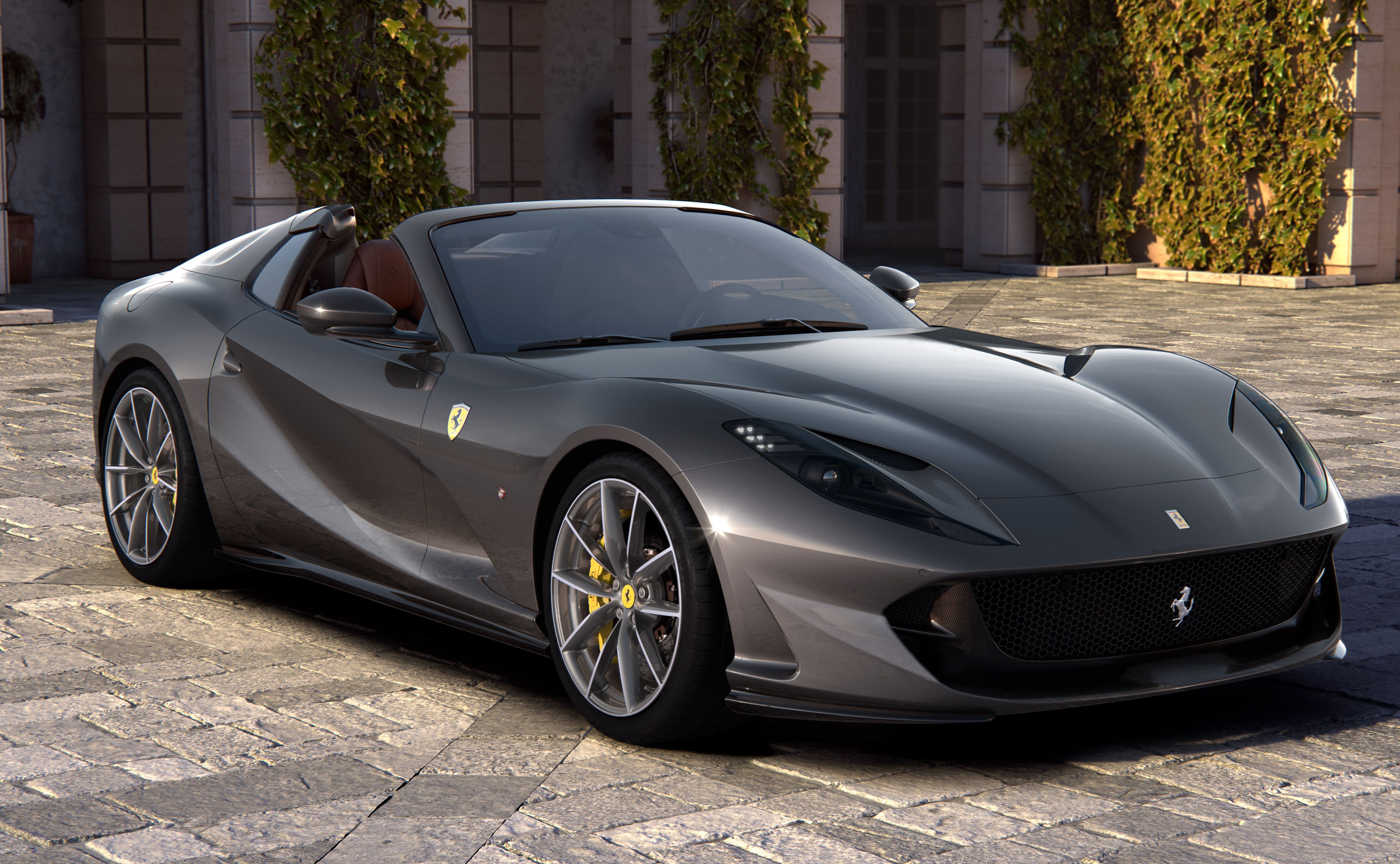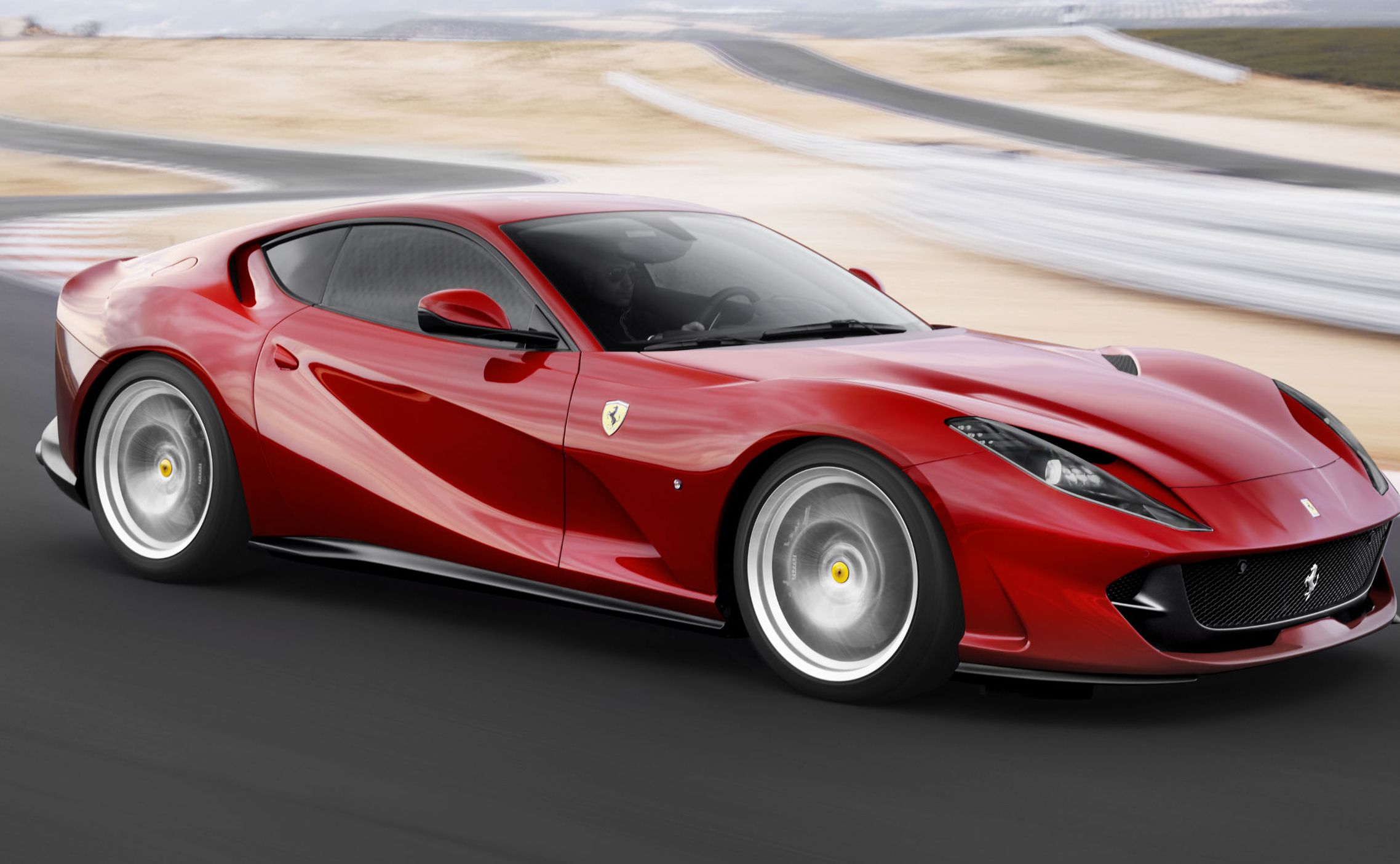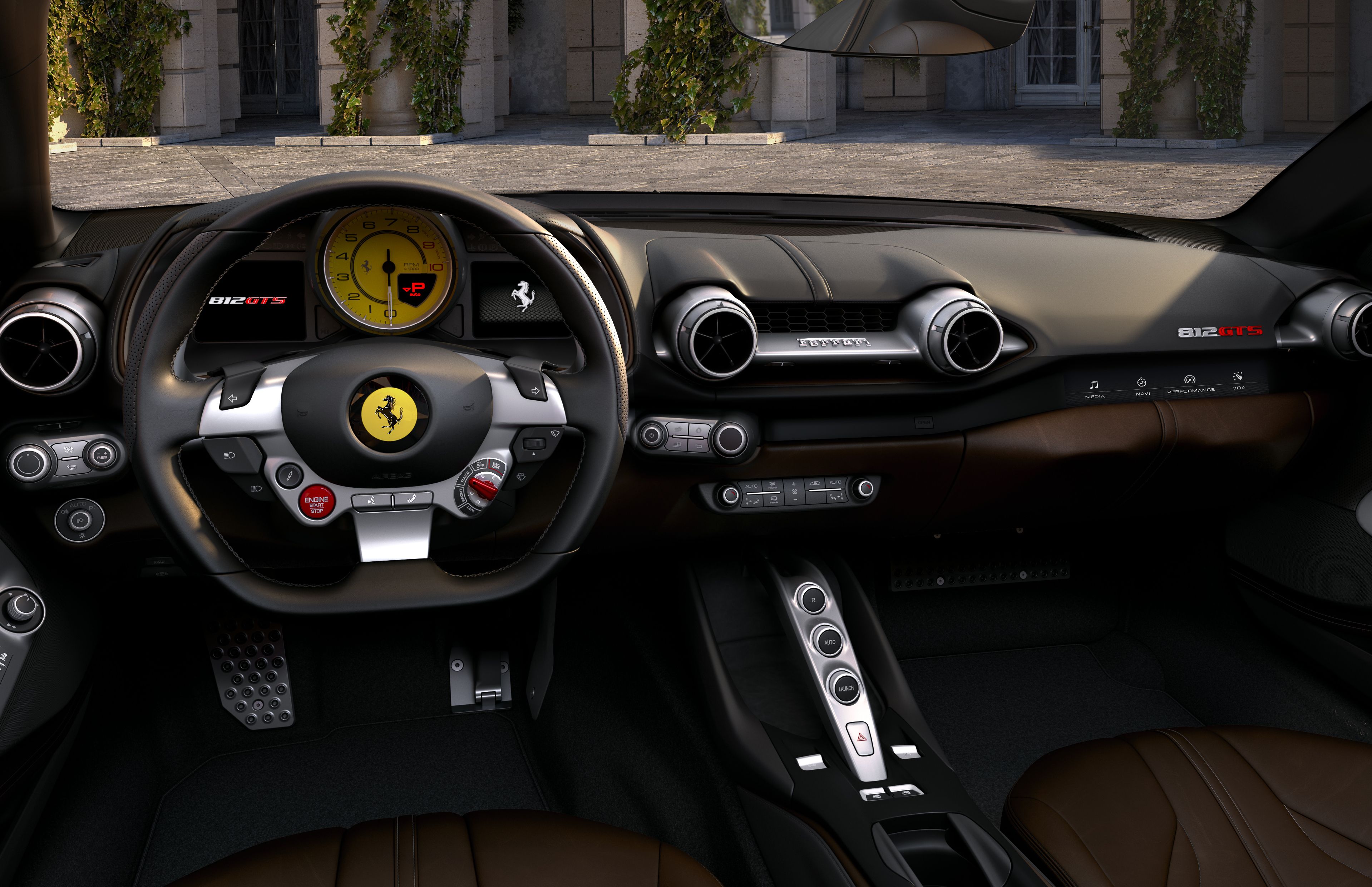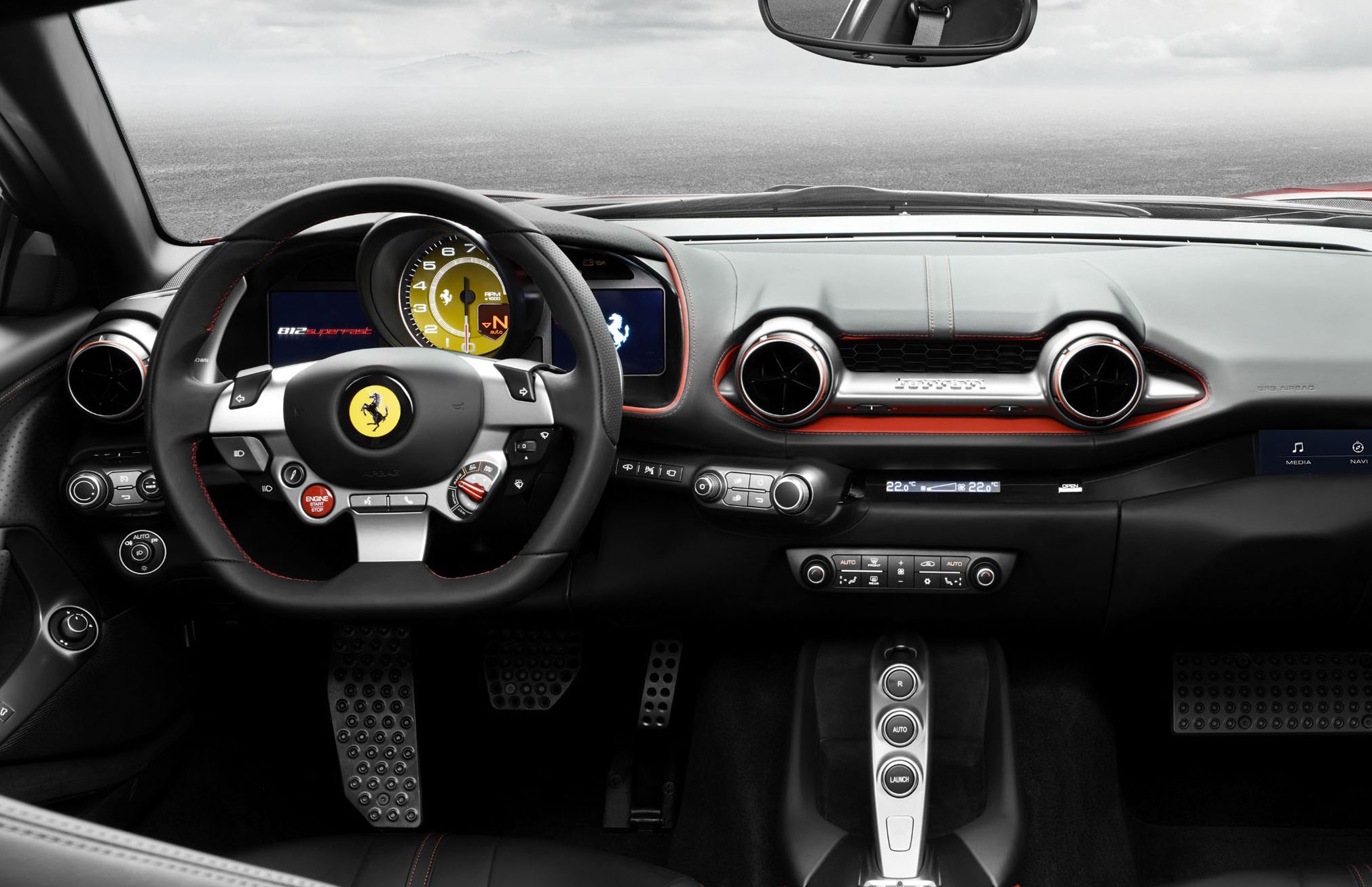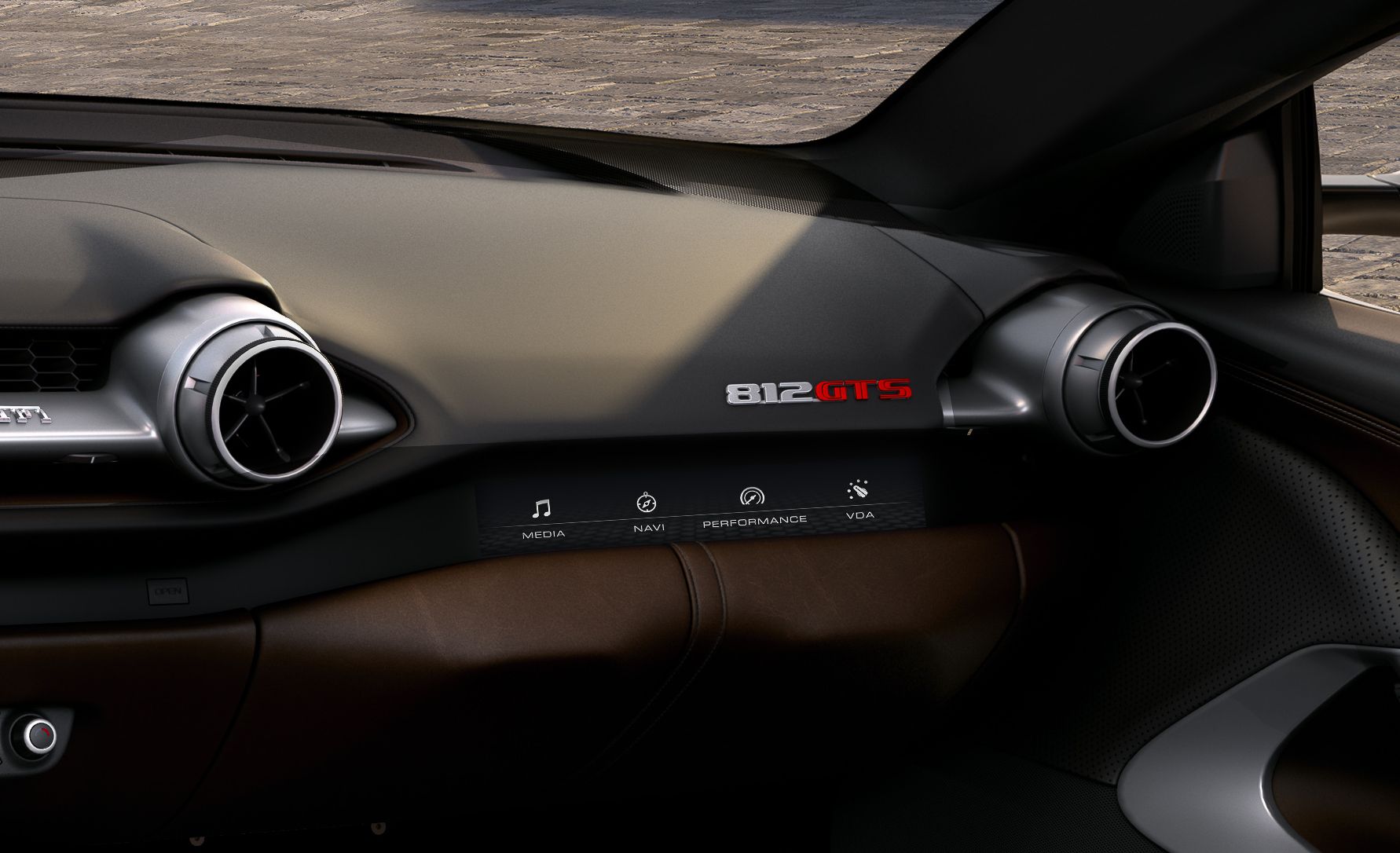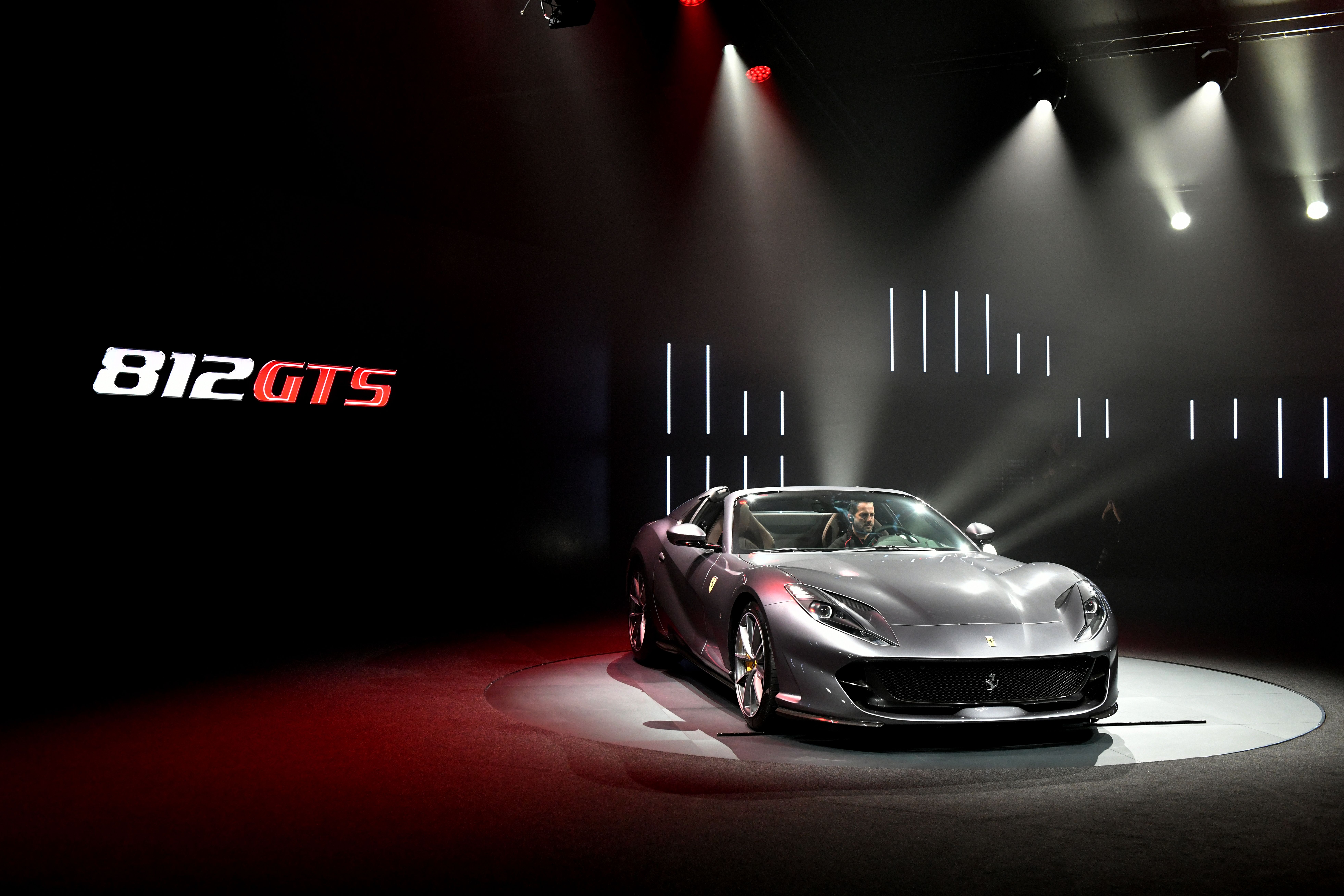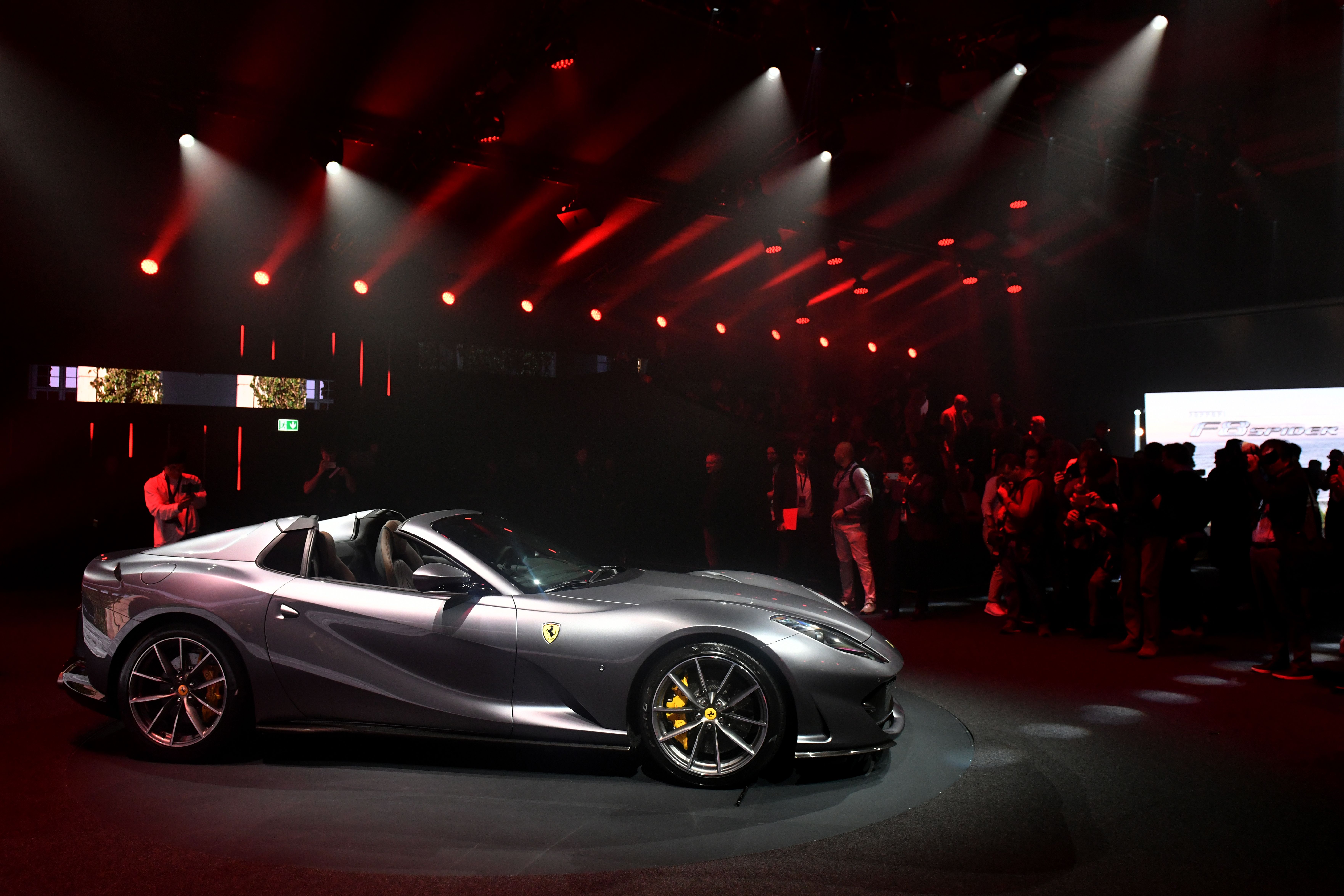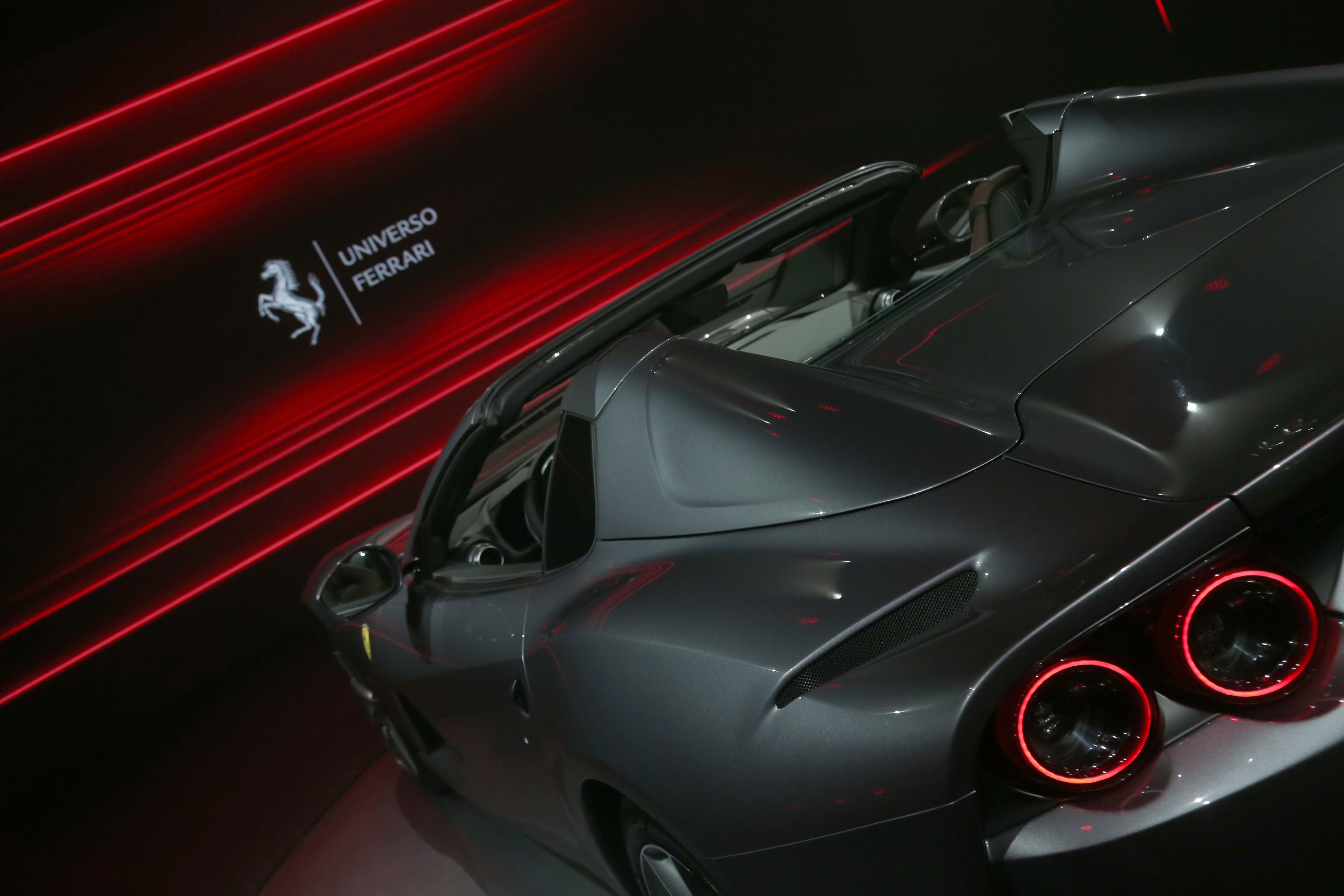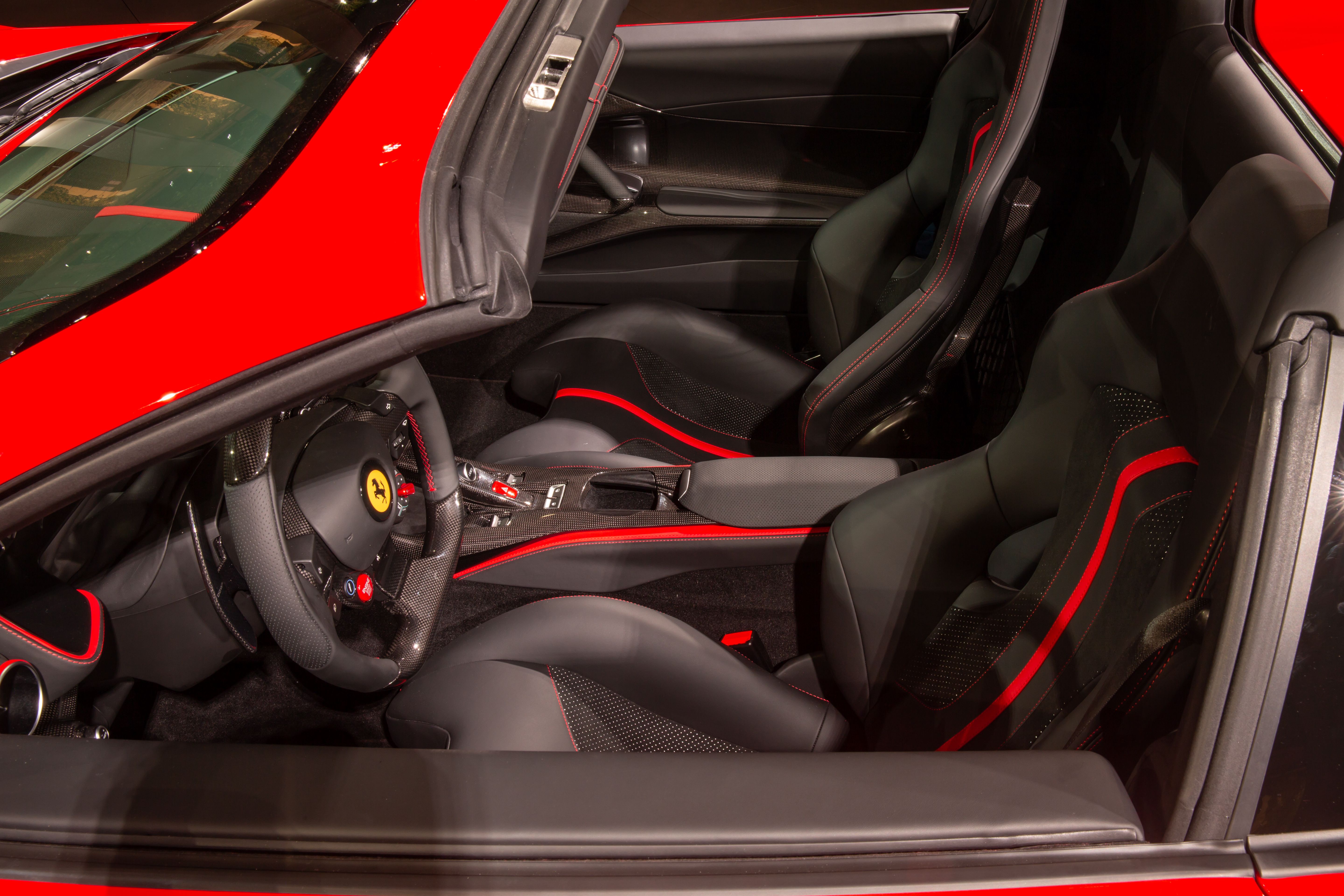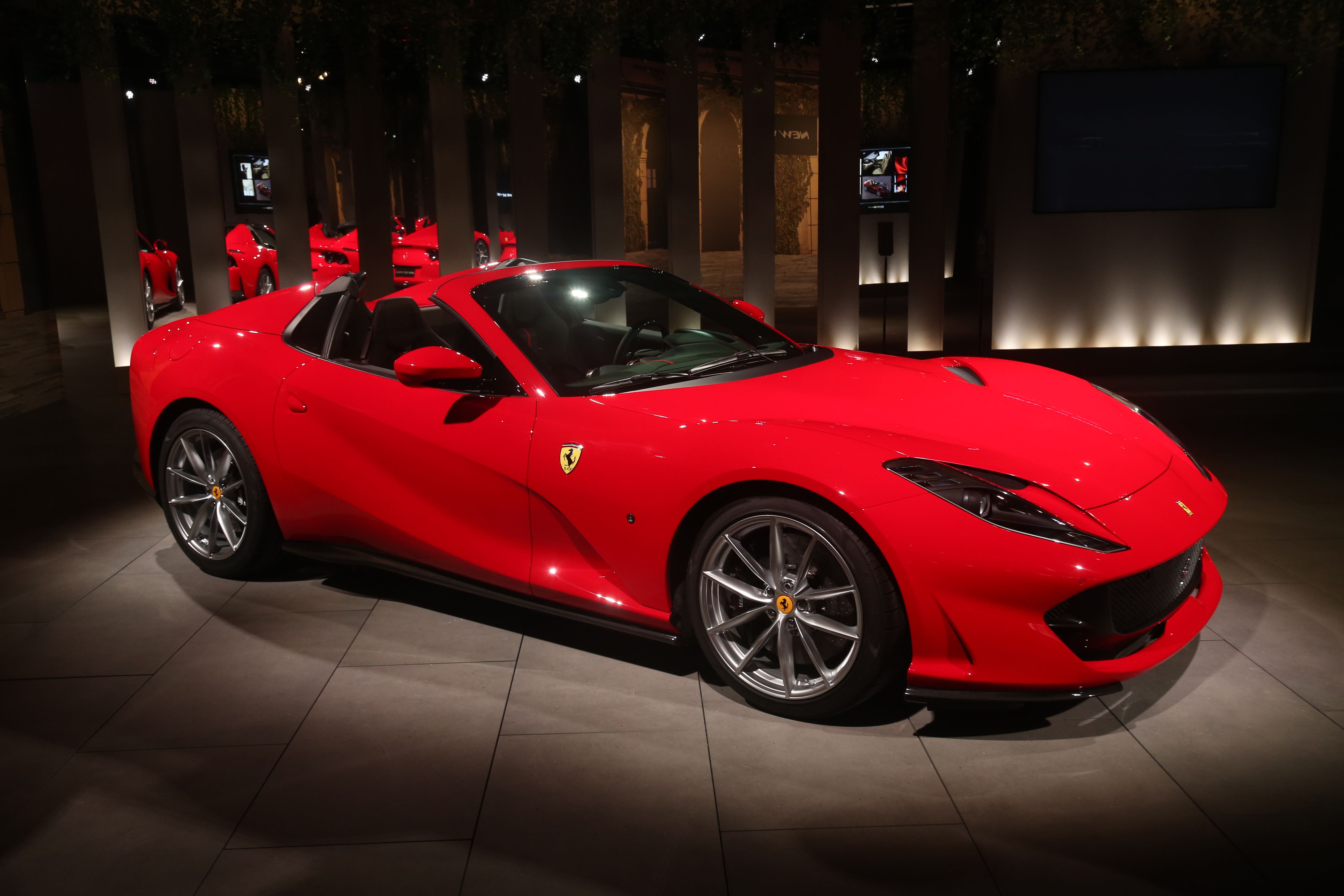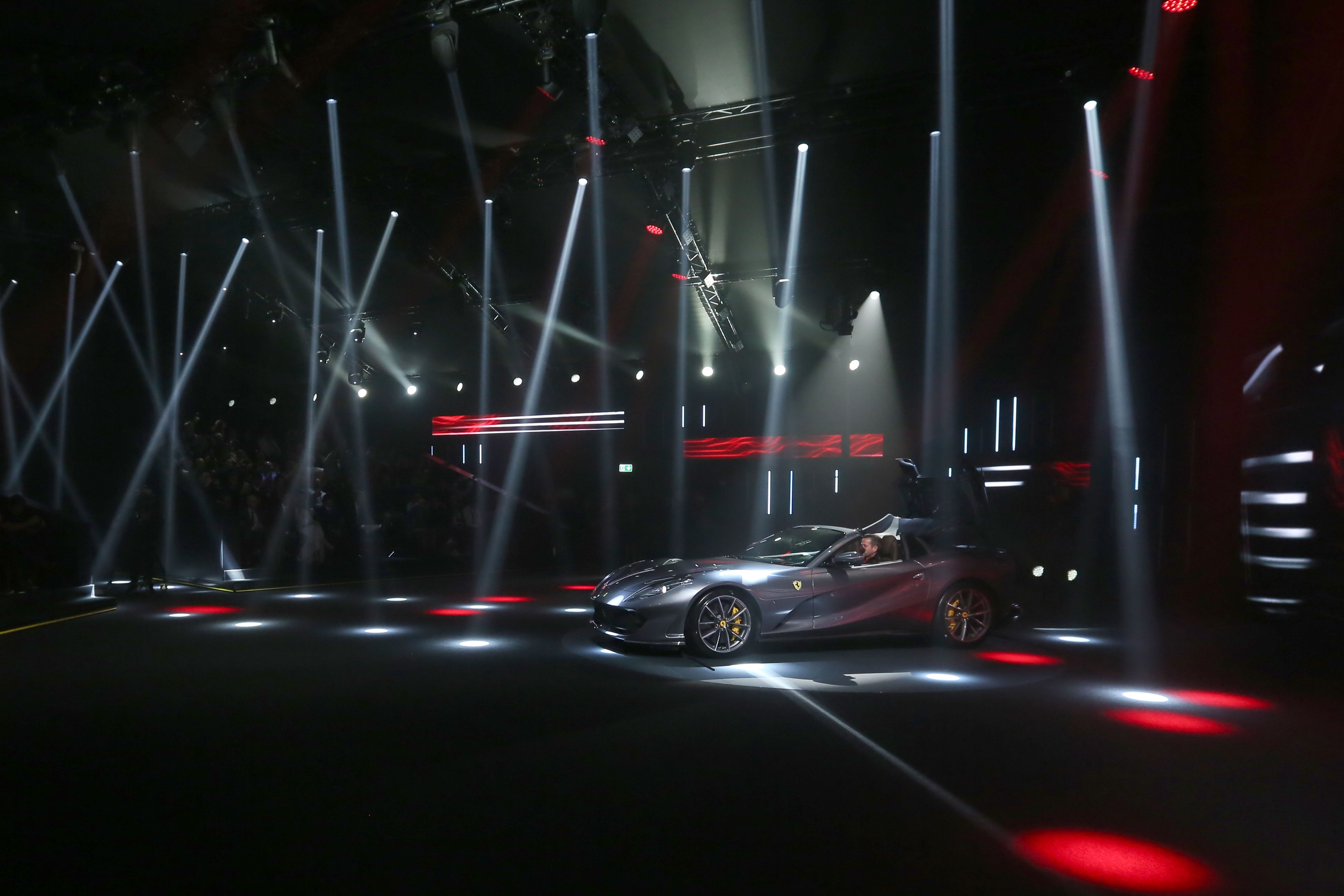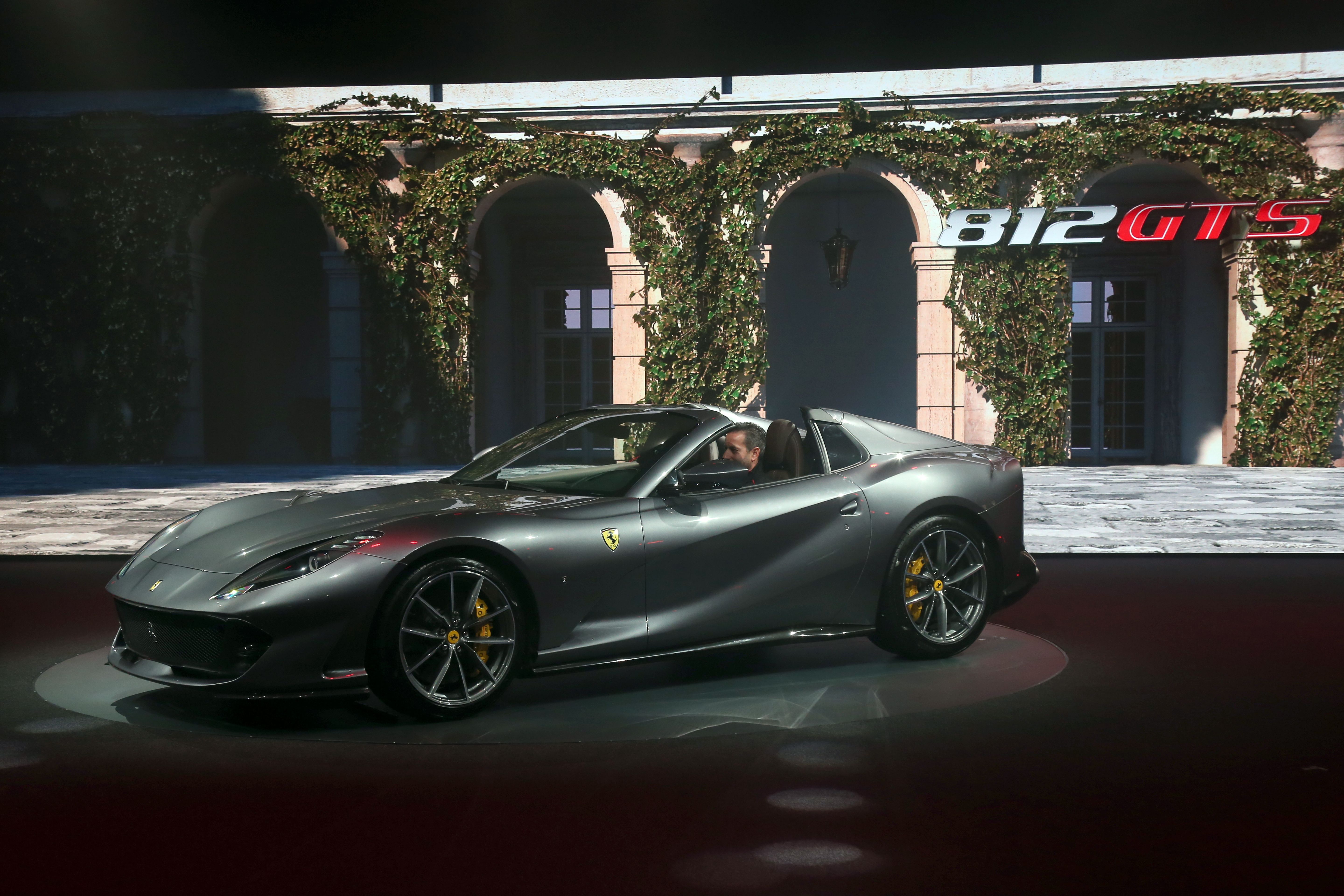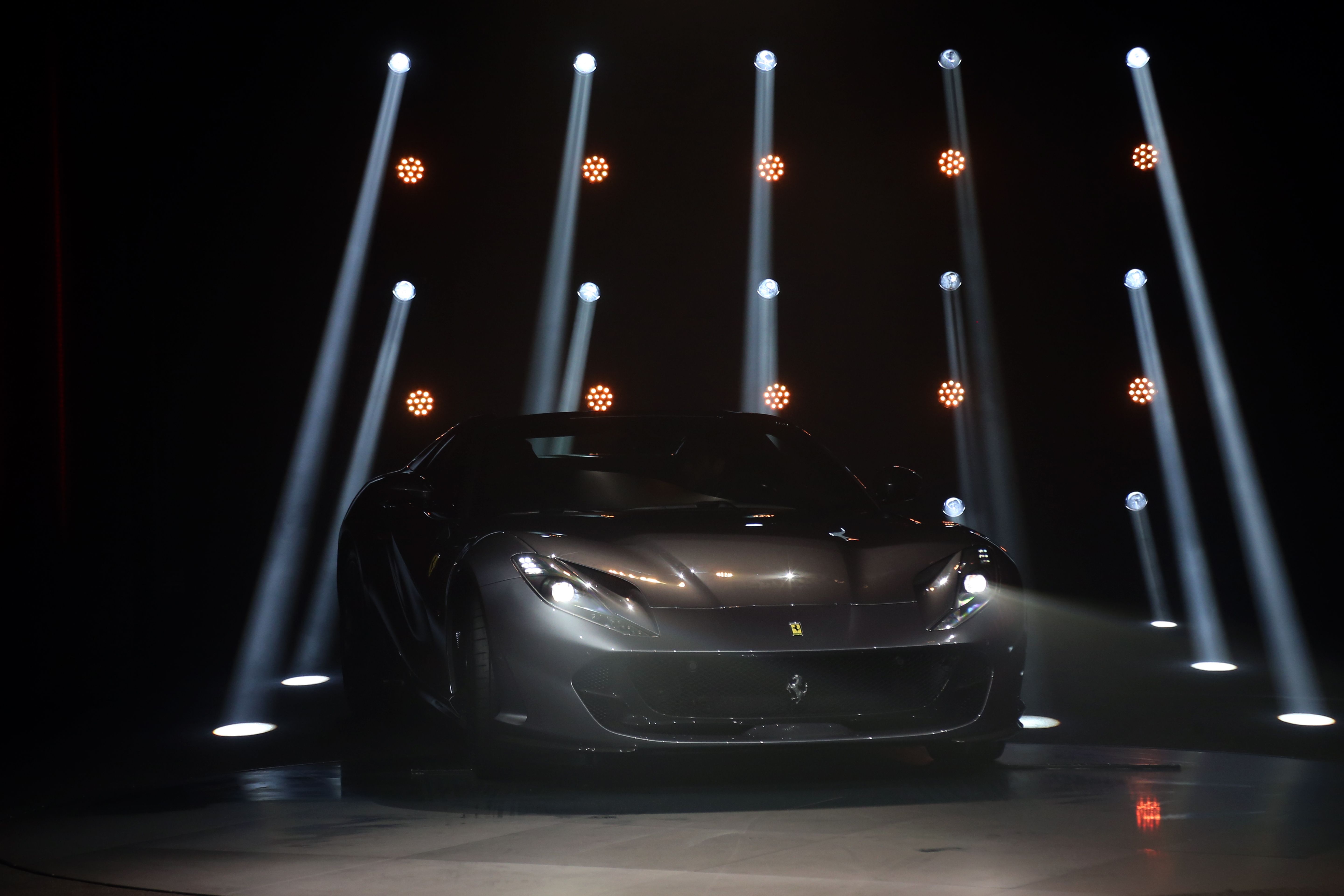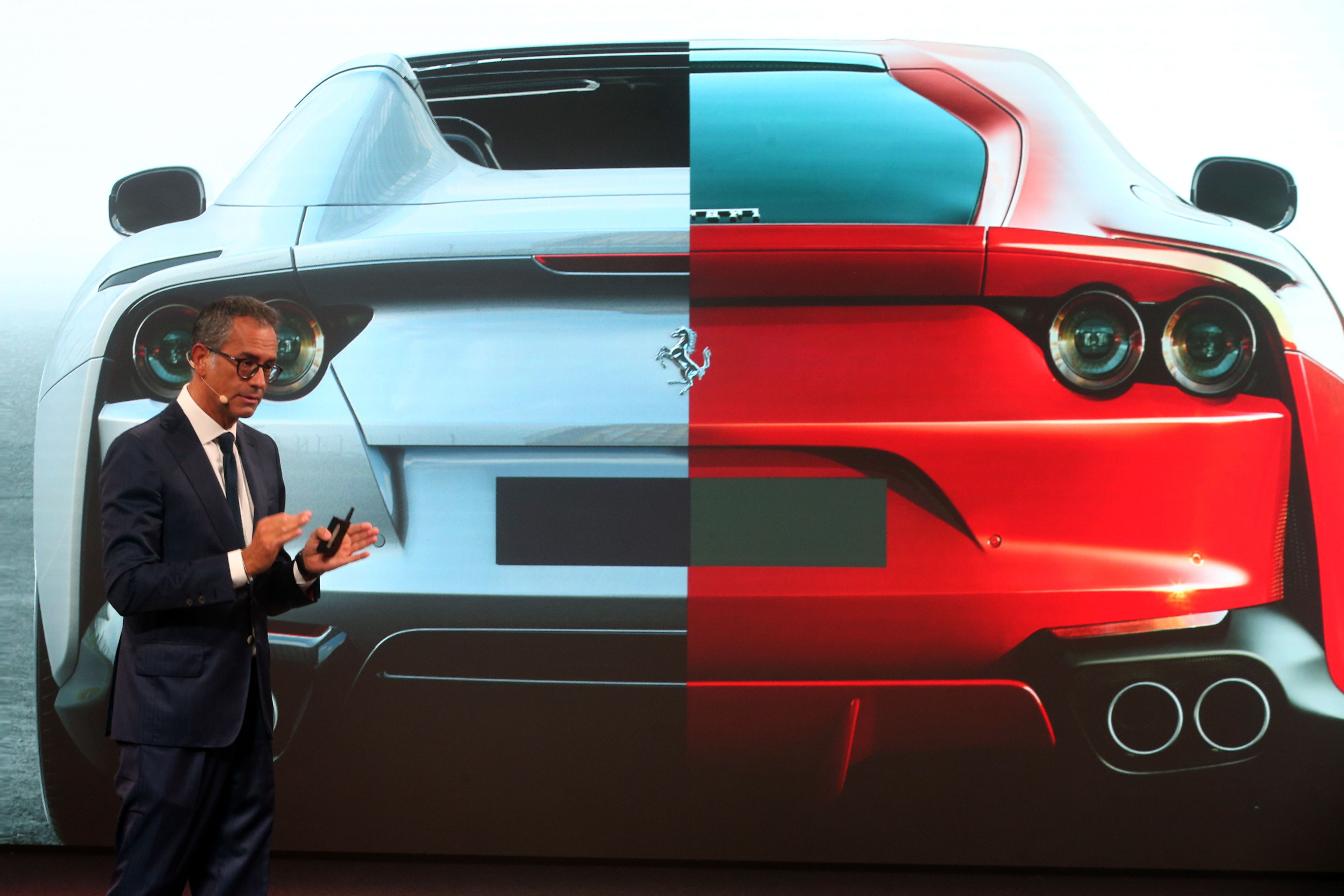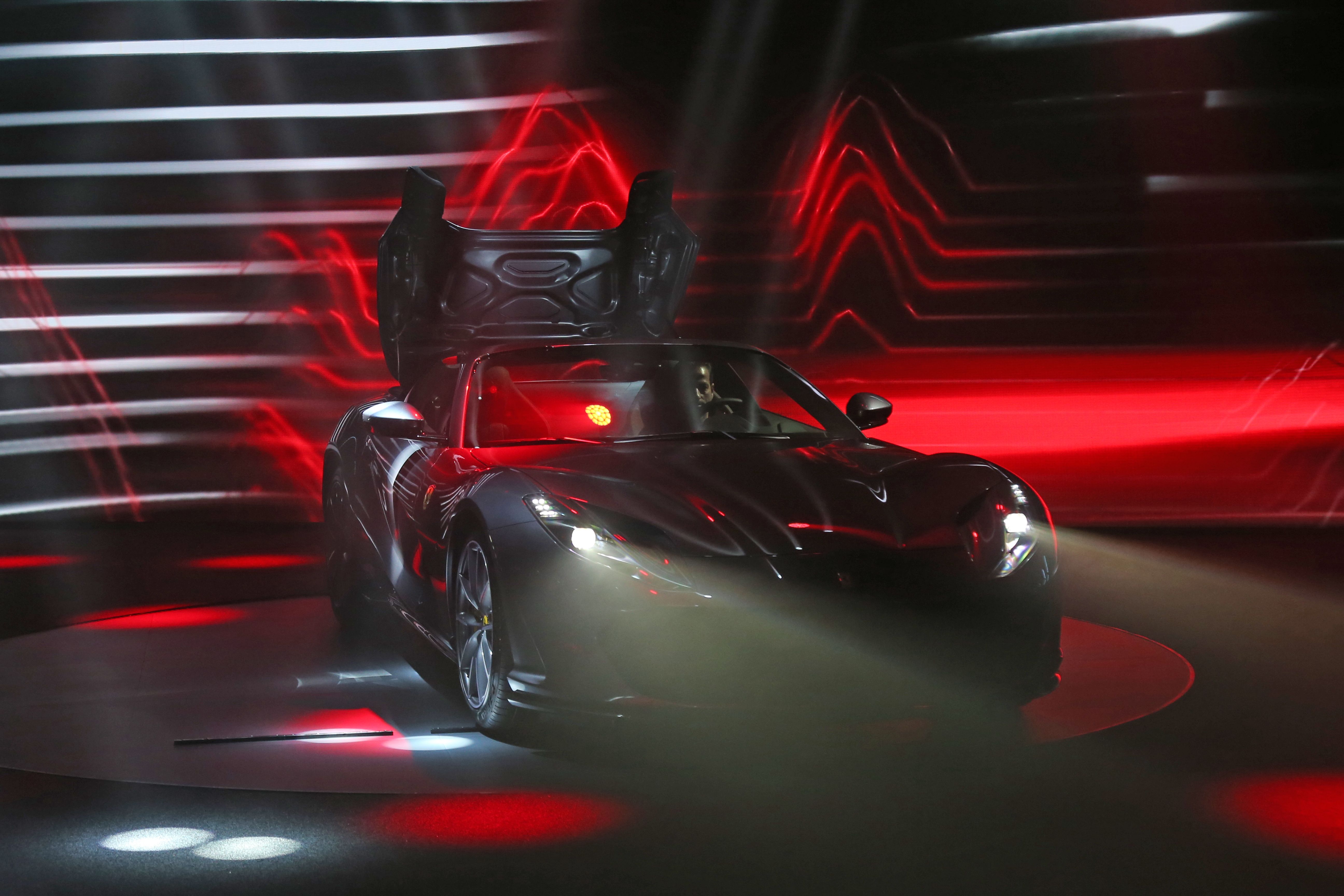The Ferrari 812 GTS is the convertible version of the 812 Superfast, the grand tourer that replaced the F12berlinetta in 2017. Ferrari's range-topping drop-top as of 2019, the 812 GTS is also the company's first production, front-engined, V-12 convertible since 1969. After 20 years of limited edition grand tourers with infinite headroom, Ferrari finally caved in a build a production-ready, drop-top grand tourer.
Besides the "GTS" badge and the minor changes above the waistline, this drop-top is pretty much identical to the 812 Superfast. It has the same 6.5-liter V-12 engine under the hood and comes with almost 800 horsepower on tap. It needs less than three seconds to hit 60 mph from a standing start and tops out at more than 200 mph. All told, it's one of the most potent grand tourers on the market and a turning point for Ferrari, which just released its first full-production convertible GT in 50 years. Find out more about that in the review below.
2020 Ferrari 812 GTS
- Make: Array
- Model: 2020 Ferrari 812 GTS
- Engine/Motor: V12
- Horsepower: 789 @ 8500
- Torque: 530 @ 7000
- [do not use] Vehicle Model: Array
Exterior
|
|
ids=862260,862261 |
no_overlay=false |
before_label=Ferrari 812 GTS |
after_label=Ferrari 812 Superfast> |
As it usually happens with convertible models based on existing coupes, the 812 GTS is identical to the 812 Superfast below the waist. This means it includes all the features that set the Superfast apart from its predecessor, the F12berlinetta.
Up front, we can see the same revised bumper with a larger intake that features a mesh grille instead of the classic horizontal and vertical slats. The grille also incorporates a black apron, while the lower section and splitter are more aggressive than before. The headlamps are very similar to the old F12berlinetta lights as far as size and shape go, but they are longer and extend more toward the nose. The new engine hood with air intakes on the sides and a reshaped center section bulge round out the front fascia, which remains identical to the coupe.
|
|
ids=860261,860262 |
no_overlay=false |
before_label=Ferrari 812 GTS |
after_label=Ferrari 812 Superfast> |
The 812's design is pretty radical on the sides when compared to the old F12berlinetta. And the GTS model retains most of these characteristics. You can notice the beefed-up lower section and a swoop-y character line that creates muscular front fenders and rear haunches. There's also a deeper scallop that becomes more muscular as it moves toward the rear haunches. But while the GTS is identical to the Superfast below the waist, we can see big modifications around the cabin.
For starters, the triangular quarter windows are gone, now replaced by a much narrower glass section. This modification was enforced by the design of the rear cabin section, which no longer includes integrated C-pillars and a traditional hatch window. The GTS sports flying buttresses and a small vertical window, but the main reason for the shorter quarter windows is the retractable roof. Because the hard-top folds under the decklid, Ferrari had to redesign the quarter windows for easier operation.
|
|
ids=862258,862259 |
no_overlay=false |
before_label=Ferrari 812 GTS |
after_label=Ferrari 812 Superfast> |
The same feature forced Ferrari to remove the aero duct from the rear fender. This change impacts the car's aerodynamics, but Ferrari says that the lack of a fender duct is compensated by the additional flap in the revised diffuser.
Overall, the 812 GTS looks rather cool from the side. Even when the top is folded under the decklid, the GTS retains the sleekness of a fastback and its two-box design with the high tail reminds me of the iconic Ferrari 365 GTB4 Daytona of 1968.
In the back, the GTS is once again identical to the coupe. There’s a larger spoiler that makes the fascia seem sculpted inside the body, as well as smaller, quad taillights that harken back to the iconic 288 GTO. Ferrari also crafted a new bumper with a floating diffuser element and large exhaust pipes on each side. A range of new aerodynamic solutions, including active flaps at the front of the underbody and an aerodynamic by-pass to increase downforce on the rear flank increase the car’s performance. As previously mentioned, the additional flap in the rear diffuser makes up for the missing vents at the top of the rear fenders.
Our Rendering vs the Actual Car
Rendering convertible models of existing coupes isn't very difficult, but it becomes tricky when automakers decide to make big changes to the design. All told, we didn't really nail it. While our design conceived flying buttresses that are specific to this type of car, they're notably smaller than the rear deal. We also went with sportier rollover hoops behind the seats, whereas Ferrari kept that area similar to the coupe's cabin, turning the GTS into a targa rather than a proper Spyder or convertible. Our designer also kept the air vents on the rear fenders. Although Ferrari removed them for practicality, it's pretty obvious that the GTS would have been just as cool with outlets in those areas. The question is, which one do you like better? The real deal or our rendering?
Interior
|
|
ids=862262,862263 |
no_overlay=false |
before_label=Ferrari 812 GTS |
after_label=Ferrari 812 Superfast> |
Ferrari didn't have much to say about the GTS' interior, but this isn't surprising. The cabin remains identical to the 812 Superfast, except for the added convenience of infinite headroom when the top is folded under the decklid and minor changes that improve aerodynamics. Ferrari actually brags that the folding roof doesn't affect neither passenger room nor luggage space.
As seen in the Superfast, the cabin layout didn’t change much in the transition from the old F12berlinetta. Highlights include a revised center stack with two round A/C vents instead of three, new controls on the passenger side dashboard, and a new steering wheel. The latter features a revised center section made from aluminum, new controls, redesigned grip areas, and a wider, flat-bottom side. It looks like it was sourced from a race car and that's pretty cool.
The cabin also sports the colored stitching that matches the contrasting touches on the dashboard and center console and new, sportier seats that provide enhanced lateral support and comfort. The upgraded instrument cluster, the company’s latest infotainment system with Apple CarPlay, and the new air-conditioning unit are available in the GTS.
If you're looking for a feature that sets the convertible apart, there's a "812 GTS" badge on the passenger side dashboard.
The retractable hard-top opens in just 14 seconds at speeds of up to 28 mph. While it doesn't take a whole lot, the top speed that allows the system to work is rather low compared to other vehicles on the market. The small rear screen between the buttresses is fully electric and can be left open when the top is up, allowing the V-12 engine's note to enter the cabin.
Just like the LaFerrari Aperta, the 812 GTS features two L-shaped flaps at the upper corners of the windscreen. These generate a concentrated vortex that creates outwash in the velocity field immediately above the rear screen, which helps avoid excess pressure behind the occupants’ heads.
An aerodynamic passage between the front trim of the two buttresses is also created to allow both venting of pressure in the cabin and recompression of the separation bubble downstream from the wind stop. The latter improves aerodynamic efficiency and stabilizes the air flow inside the cockpit.
Drivetrain
As you might have already guessed, similarities between the Superfast and the GTS continue under the hood as well. In short, the 812 drop-top also features the naturally aspirated, 6.5-liter V-12 engine.
Based on the outgoing 6.3-liter V-12 mill in the old F12berlinetta, the naturally-aspirated unit cranks out 789 horsepower and 530 pound-feet of torque. That’s 59 extra horsepower compared to the F12berlinetta, to go with 20 additional pound-feet of twist. Just like the coupe, the 812 GTS is more potent than the limited-edition F12tdf, boasting an extra 20 horsepower and 11 pound-feet.
These figures also make the 812 GTS the most powerful production convertible on the market. Likewise, the 121 horsepower-per-liter output is more than any other front-engined production car has ever even come near to delivering. Mighty impressive!
If these claims aren't convincing enough for you, then you should know that the 6.5-liter V-12 is as powerful as the LaFerrari’s gasoline engine, while delivering an extra 13 pound-feet of twist.
As far as performance goes, Ferrari says that the 812 GTS needs less than three seconds to hit 62 mph. That's not very precise, but it seems that the GTS is just as quick as the coupe version. For the U.S. market, the 812 Superfast is rated with a 0-to-60 mph sprint of 2.9 seconds. Top speed remains similar to the coupe at 211 mph, which is really impressive for a convertible.
How does it compare to its rivals? Well, the Lamborghini Aventador S Roadster falls behind when it comes to output. Although it has a similar V-12 that displaces 6.5 liters, it generates "only" 730 horsepower, 59 horses below the 812 GTS. Lambo's V-12 is also rated at 509 pound-feet, which is 21 pound-feet less than the Ferrari. Given that the Aventador S hits 60 mph in 2.9 seconds, we could say that they're on par, despite the Aventador's deficit in both departments. The Lambo wins the top speed battle at 217 mph, thanks to an extra six mph.
The 812 GTS is also more powerful than the Aston Martin DBS Superleggera Volante. The British grand tourer also features a V-12, but the 5.2-liter unit is twin turbocharged. It cranks out 715 horsepower, 74 horses less than the Ferrari. On the flipside, turbocharging returns a whole lot of torque at 664 pound-feet. That's a whopping 136 more than the 812 GTS. However, the DBS Superleggera is notably slower than the 812 GTS, as it needs 3.5 seconds to hit 60 mph. As far as top speed goes, it's on par at 211 mph.
Finally, the 812 GTS also features Ferrari’s latest EPS (Electric Power Steering), which was designed to fully exploit the potential of the car’s performance. The latest 5.0 version of Maranello’s patented Side Slip Control (SSC) also makes the GTS' tremendous performance easier to handle. Another highlight is the Virtual Short Wheelbase 2.0 system (PCV), which features a further evolution of the software that improves handling and reduces vehicle response times even further.
Prices
As usual, Ferrari did not release pricing information at launch, so we don't know how much the 812 GTS costs as of this writing. However, with the 812 Superfast priced from around $360,000, it's safe to say that the GTS will fetch almost $390,000 before options.
Competition
Lamborghini Aventador S Roadster
While it may not be a front-engined supercar, the Aventador was considered the F12berlinetta's main competitor in this niche. The 812 Superfast arrived just in time for the updated Aventador S, which also comes in Roadster form to compete with the 812 GTS. Although the update didn't bring radical changes to the Aventador, the Lambo continues to be an aggressive proposition. While the 812 is definitely oriented toward the grand tourer market, the Aventador S looks like a full-fledged supercar. Performance is very similar. Powered by a 6.5-liter V-12 rated at 730 horsepower and 509 pound-feet, the Aventador needs 2.9 seconds to hit 60 mph from a standing start. It also comes with four wheel steering, a feature that makes it more stable at high speeds. On the other hand, the Lambo is much more expensive, fetching in excess of $430,000 in Roadster trim.
Read our full review of the 2019 Lamborghini Aventador S Roadster
Aston Martin DBS Superleggera Volante
A replacement for the iconic Vanquish, the DBS Superleggera is Aston Martin's range-topping vehicle in terms of performance. Aston Martin just launched the convertible model for the 2020 model year and it's just as cool, but comes with infinite headroom. Although it retains the styling characteristics of a sporty grand tourer, the DBS Superleggera looks more aggressive than the Vanquish. The sleek profile, the pointy nose with the massive grille and the wide rear end make it a perfect rival for the Ferrari 812 GTS. Under the hood, the DBS hides a twin-turbo, 5.2-liter V-12 engine. The mill cranks out 715 horsepower and 664 pound-feet of torque. That's less power, but notably more torque than the Ferrari. The DBS is significantly slower to 60 mph though, needing 3.5 seconds to hit the benchmark. Top speed is similar at 211 mph. The DBS Superleggera Volante is the most affordable proposition here, as it starts from $329,100.
Read our full story on the 2019 Aston Martin DBS Superleggera Volante
Conclusion
Powerful, fast, beautiful. That's what the 812 GTS is all about. It also offers infinite headroom when you feel like driving with the wind in your hair. Seriously, how can you not like such a car? But beyond being a grand tourer with a removable top, the 812 GTS is a very special car in Ferrari's lineup. That's because it marks the return of the front-engined, convertible grand tourer in the lineup after no less than 50 years! Yes, the 1969 365 GTS4 Daytona was the last front-engined, V-12 Ferrari sold with a convertible body style as a full production model. While Ferrari did offer four front-engined grand tourers since 2000, the 550 Barchetta, the Superamerica, the SA Aperta, and the F60 America, they were all limited edition models built in just a handful of examples. So this is basically Ferrari's most important convertible in decades.
Further reading
Read our full review on the 2018 Ferrari 812 Superfast.


